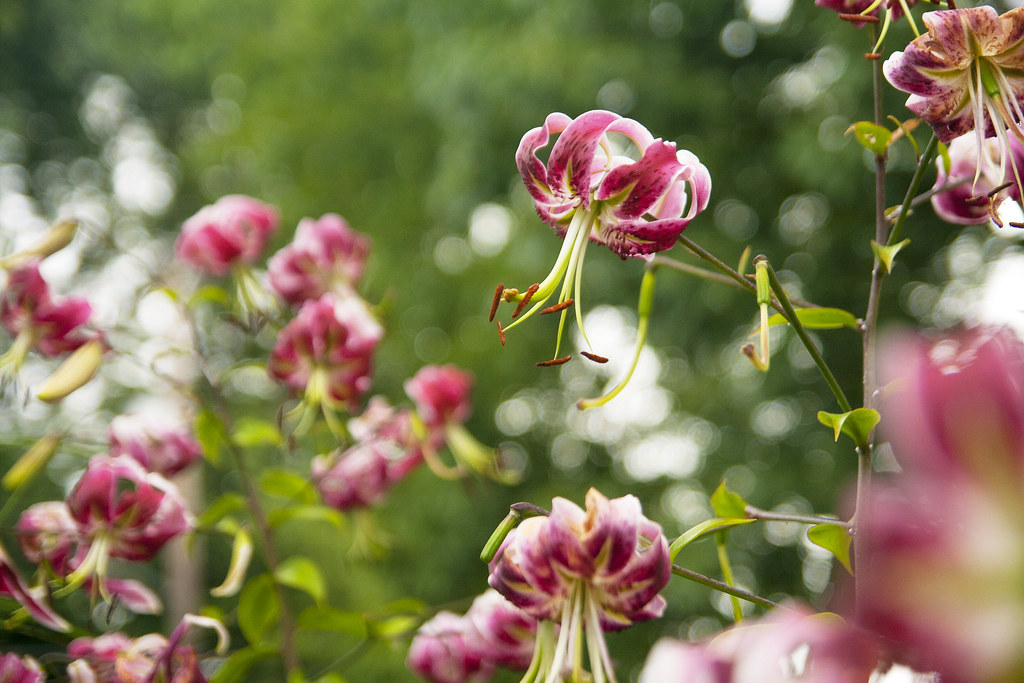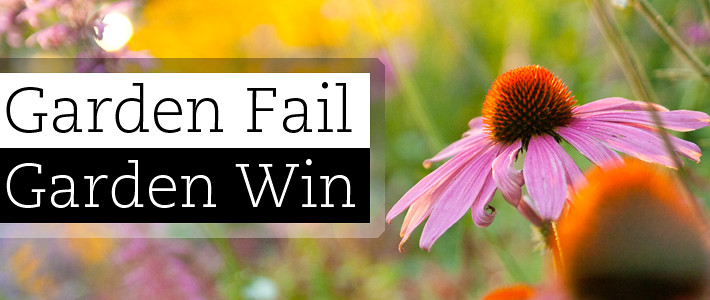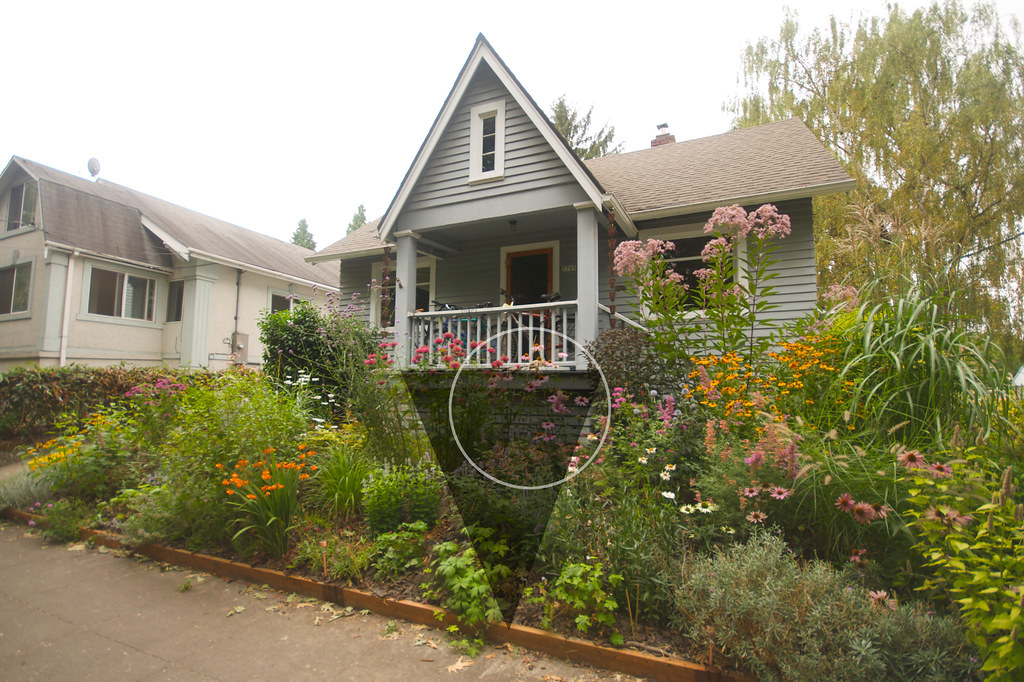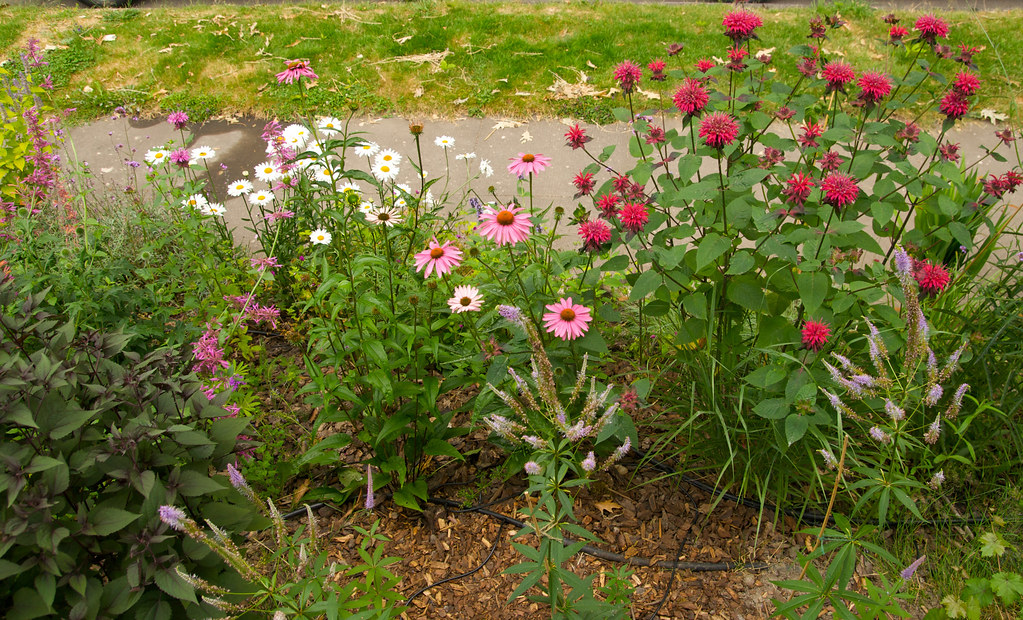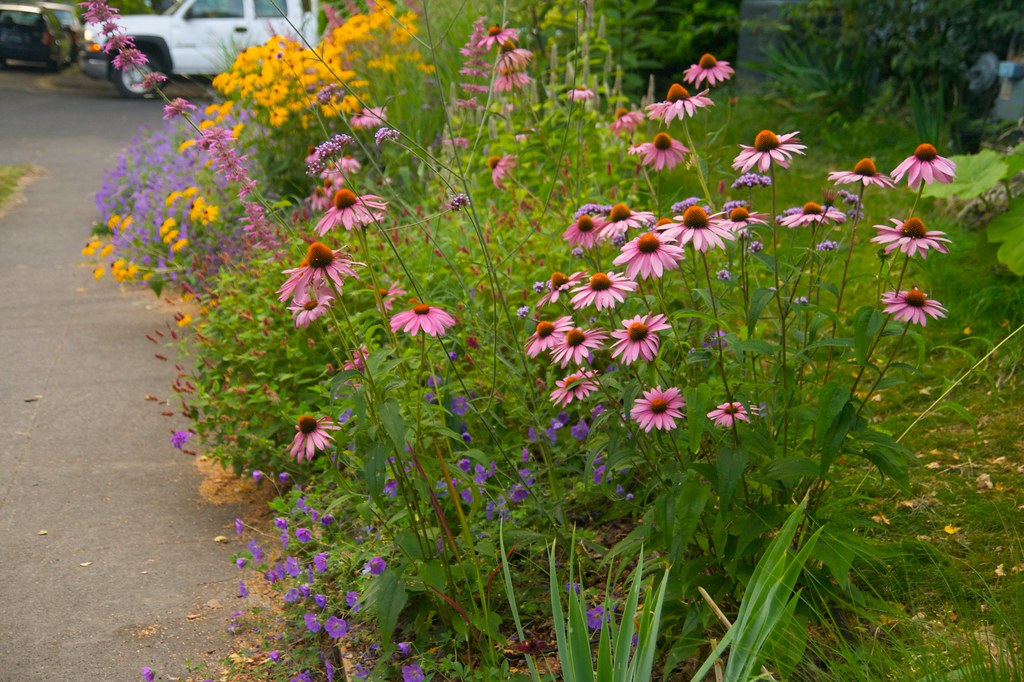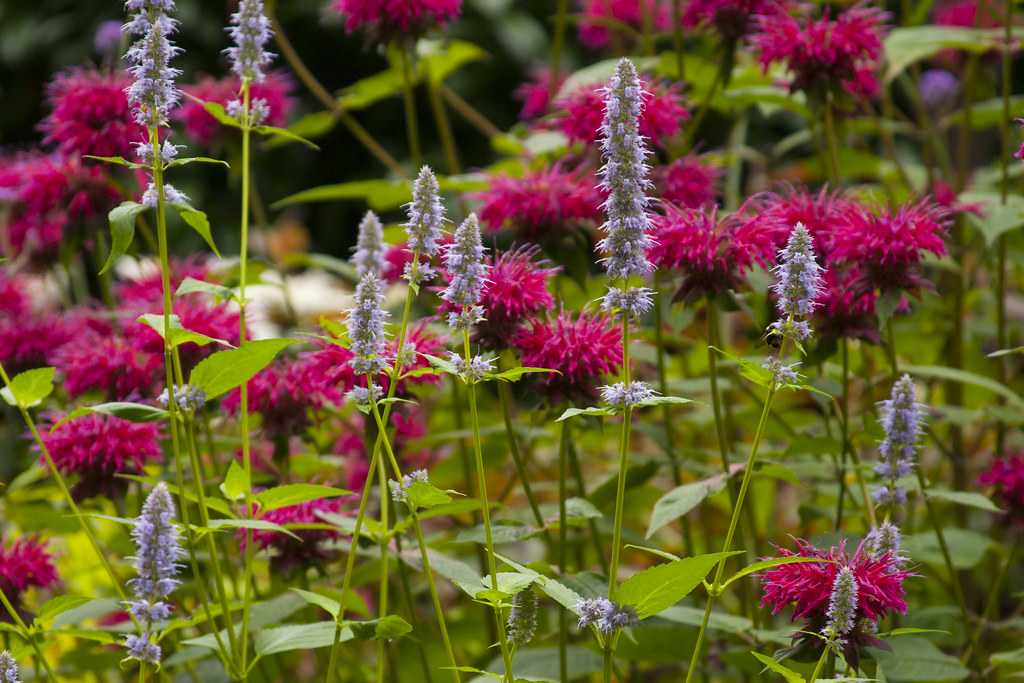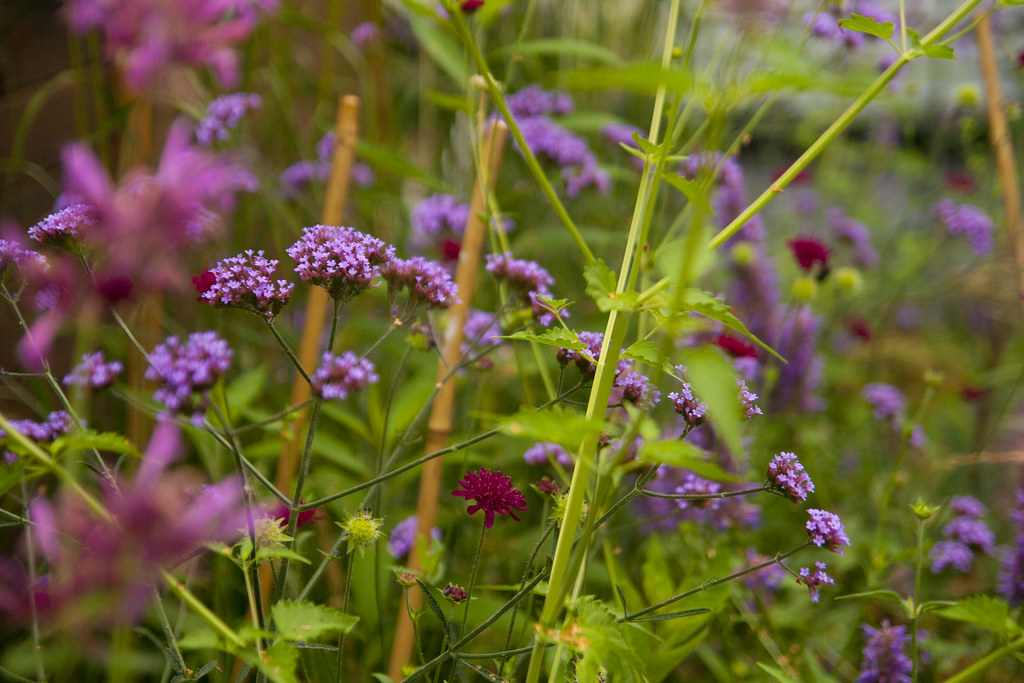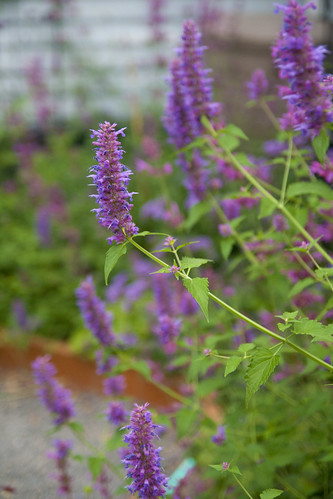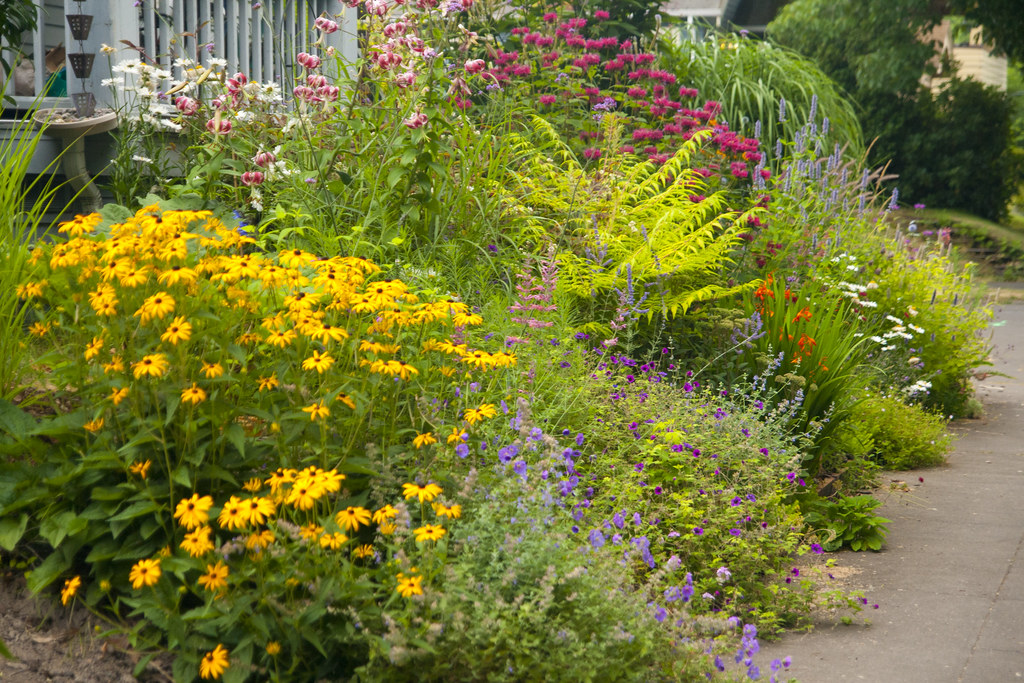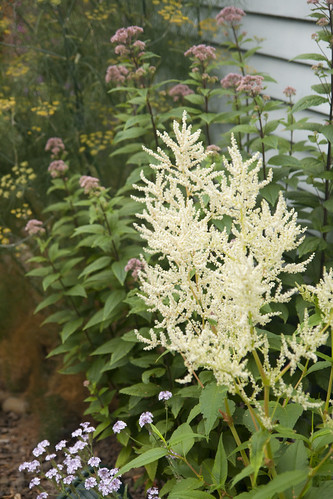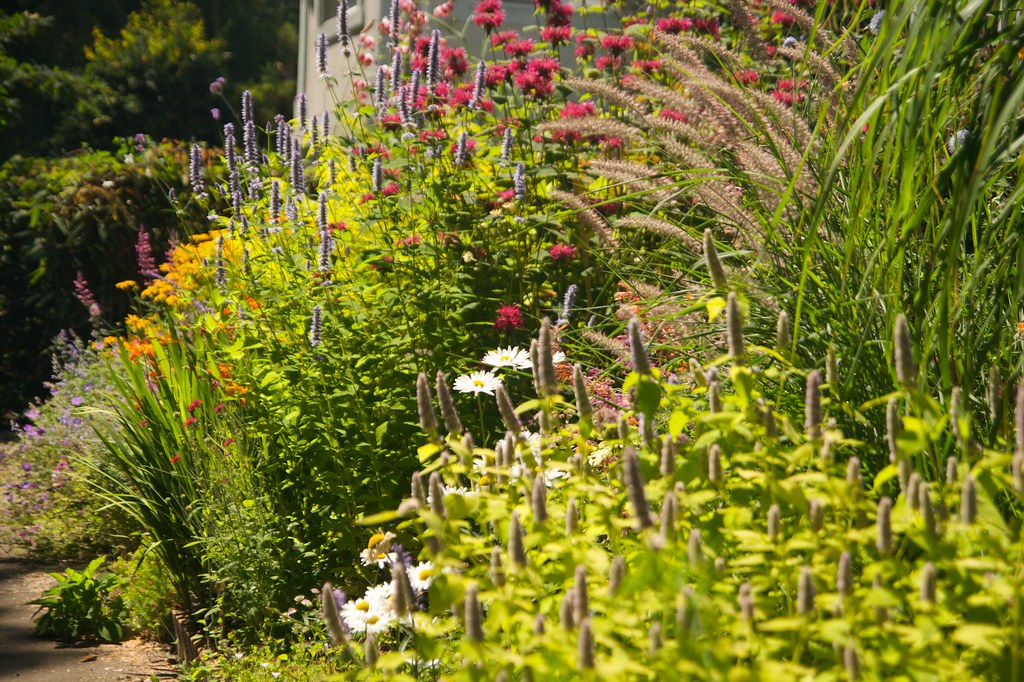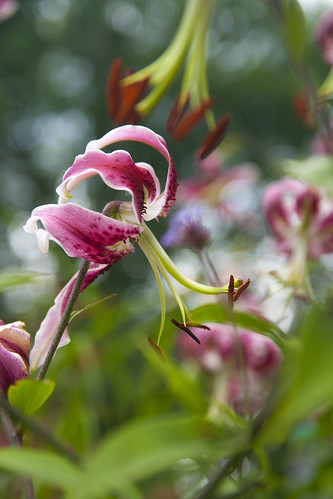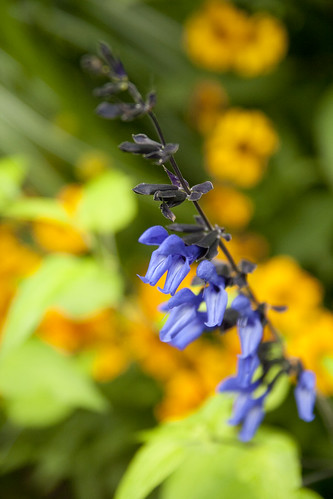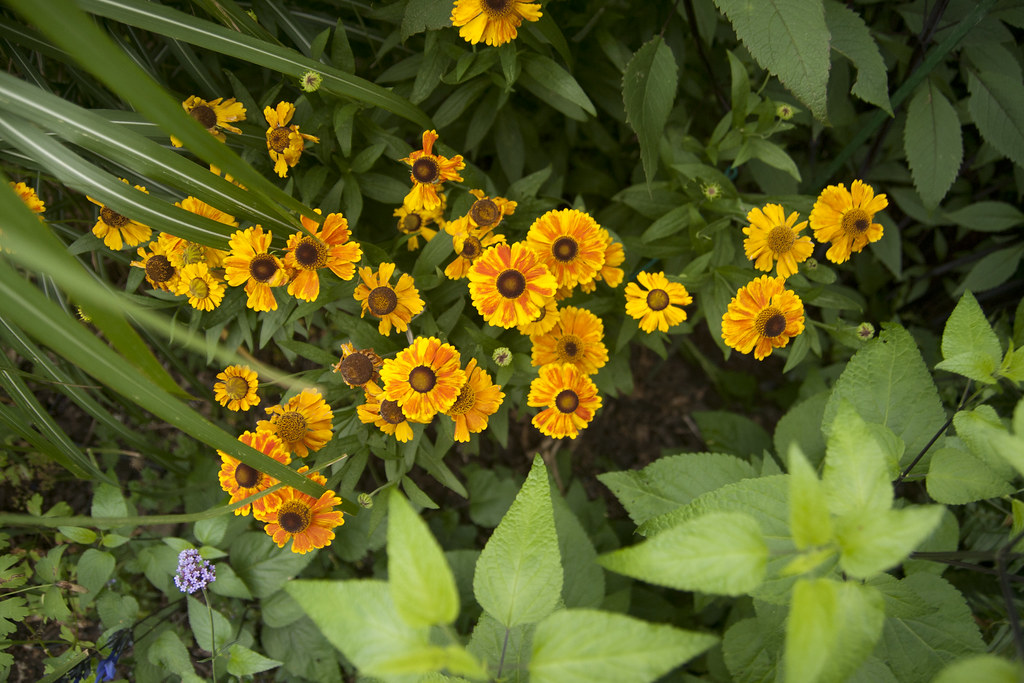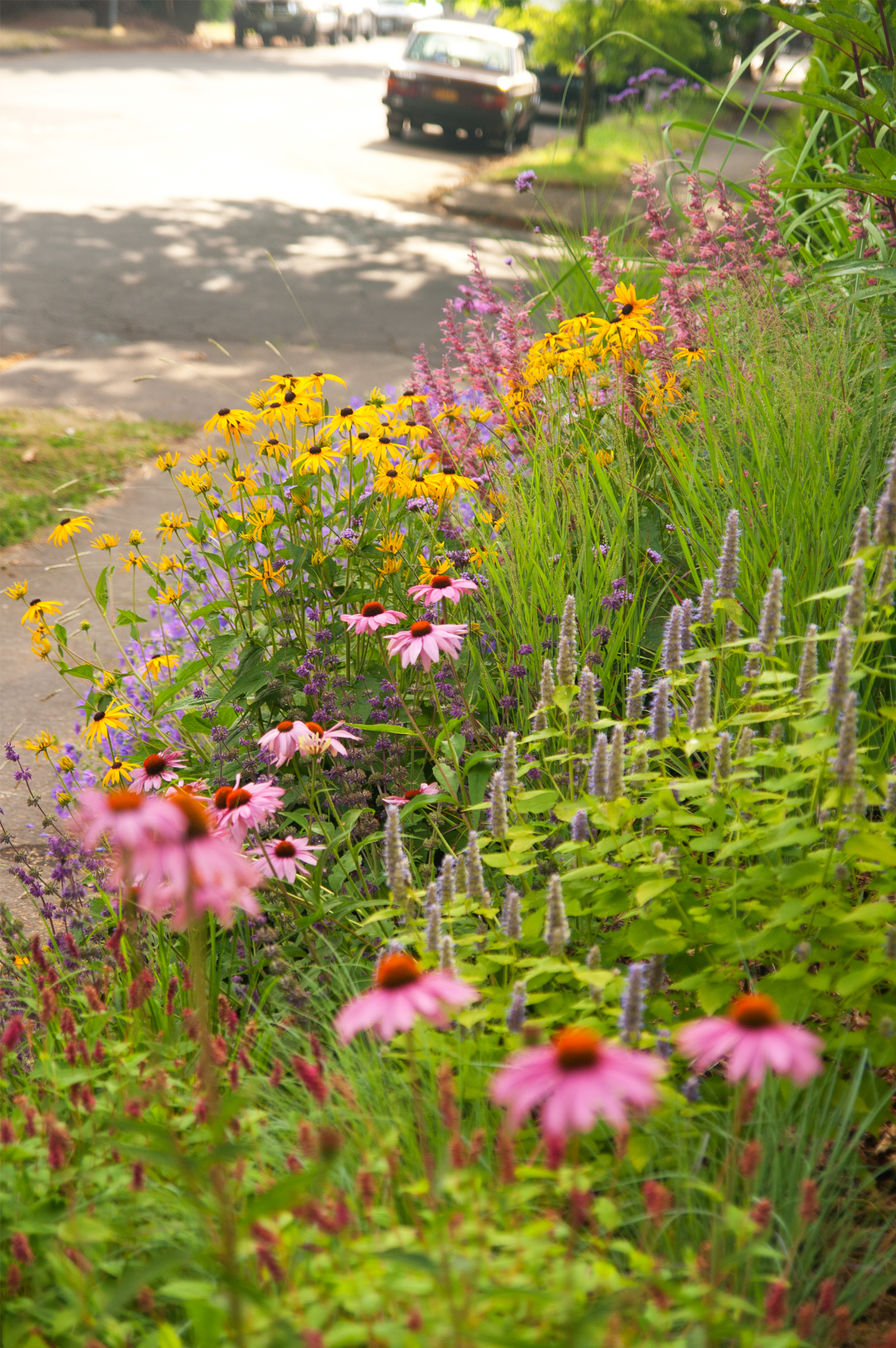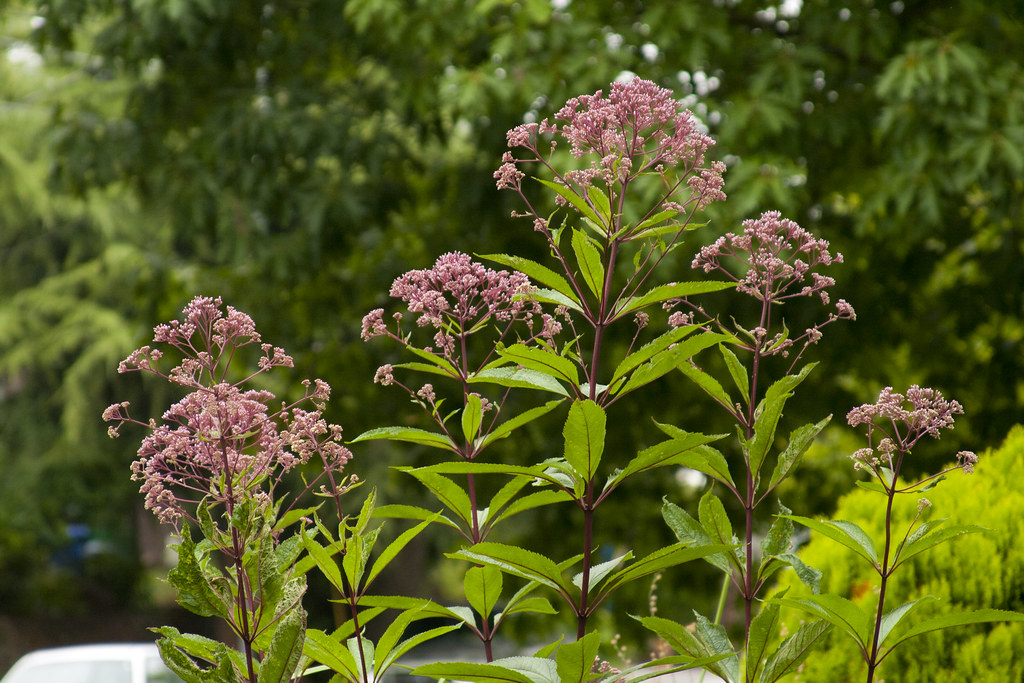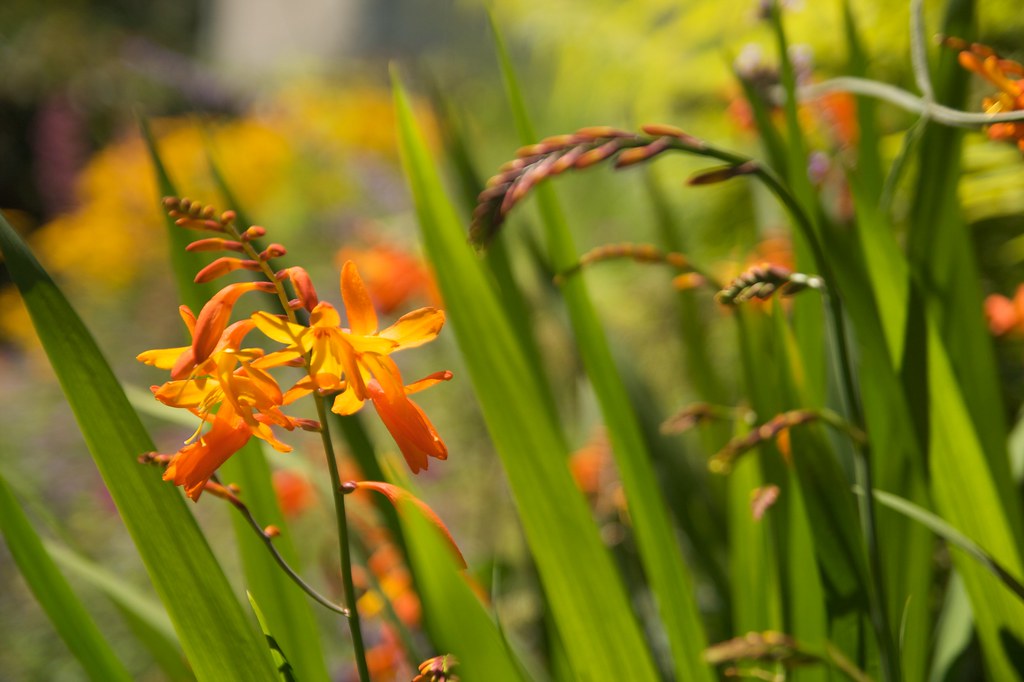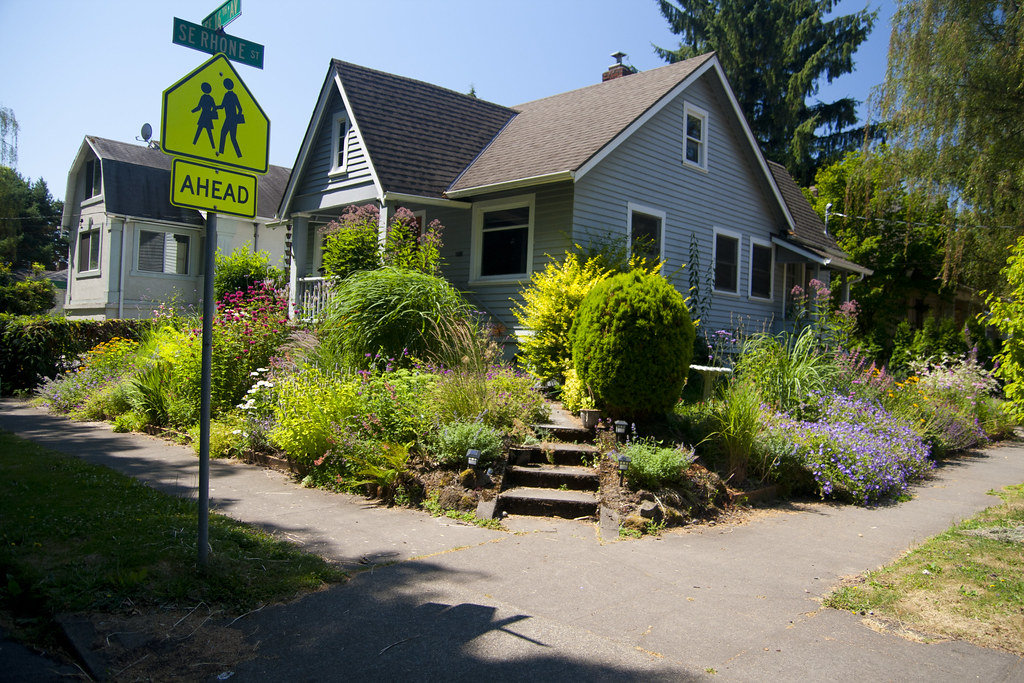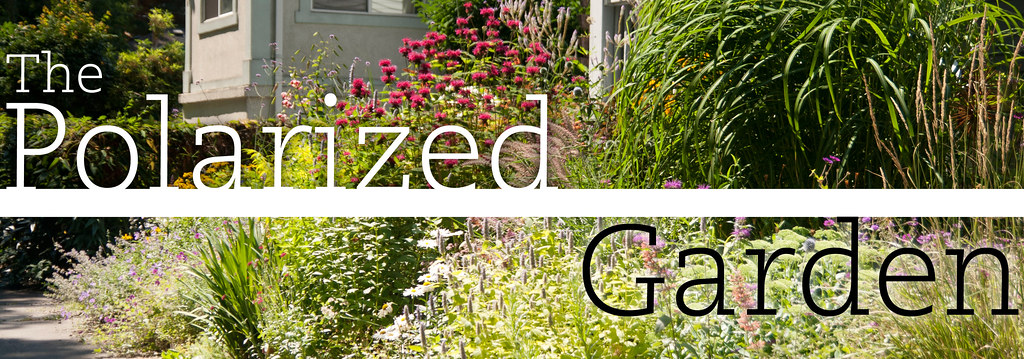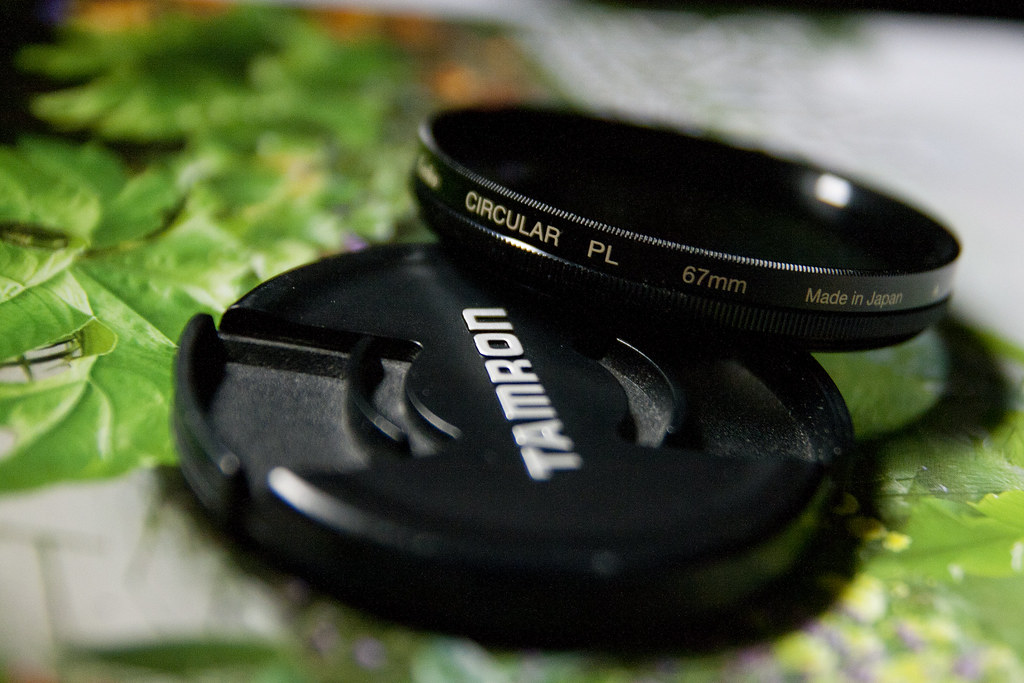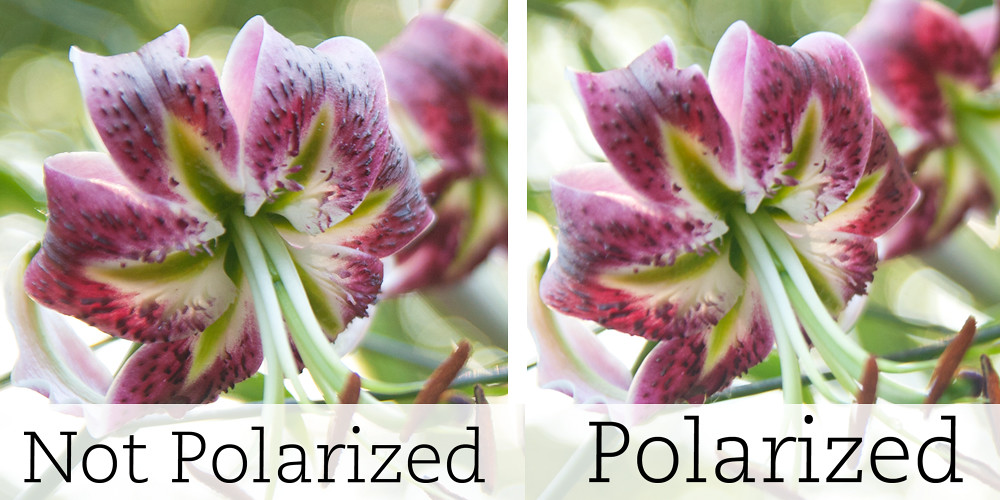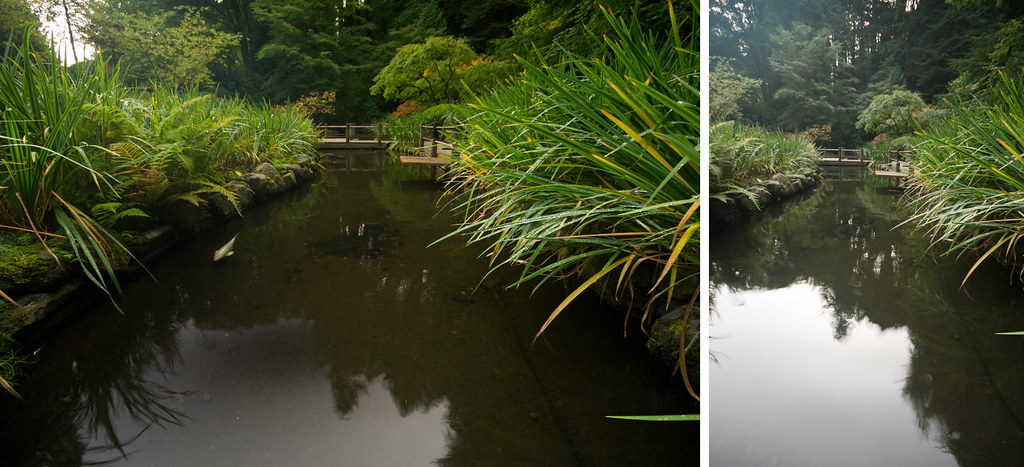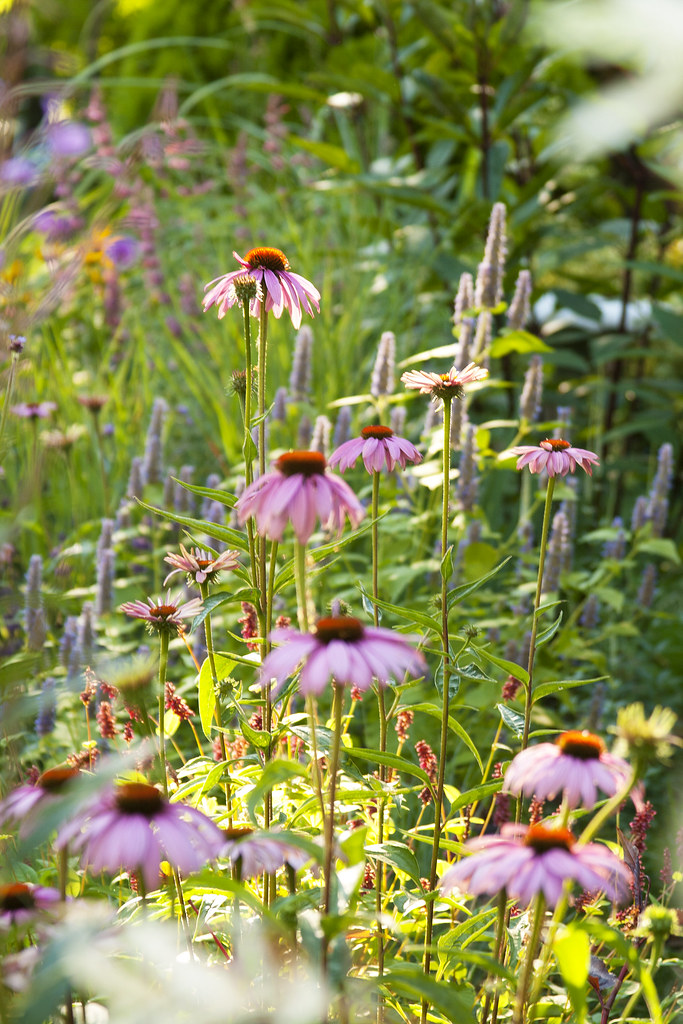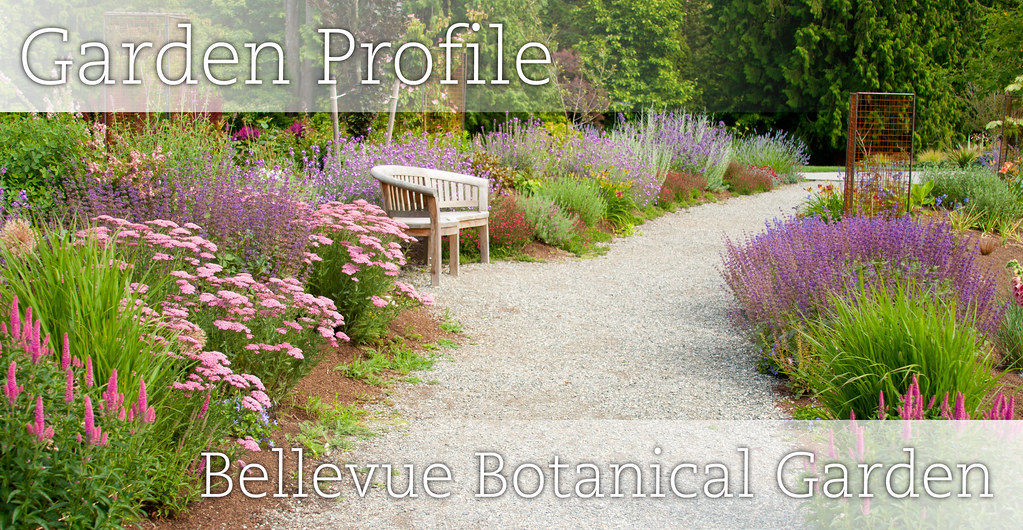
A few weeks ago we decided to take a weekend off from everything and head up to Seattle...mostly to visit the Battlestar Galactica exhibit at the SciFi Museum (yes, we're nerds). Of course, I couldn't commit to an entire weekend without ANY sort of garden activity...so we also decided to visit the Bellevue Botanical Garden (which, I'm ashamed to admit, I'd never heard of) as well.
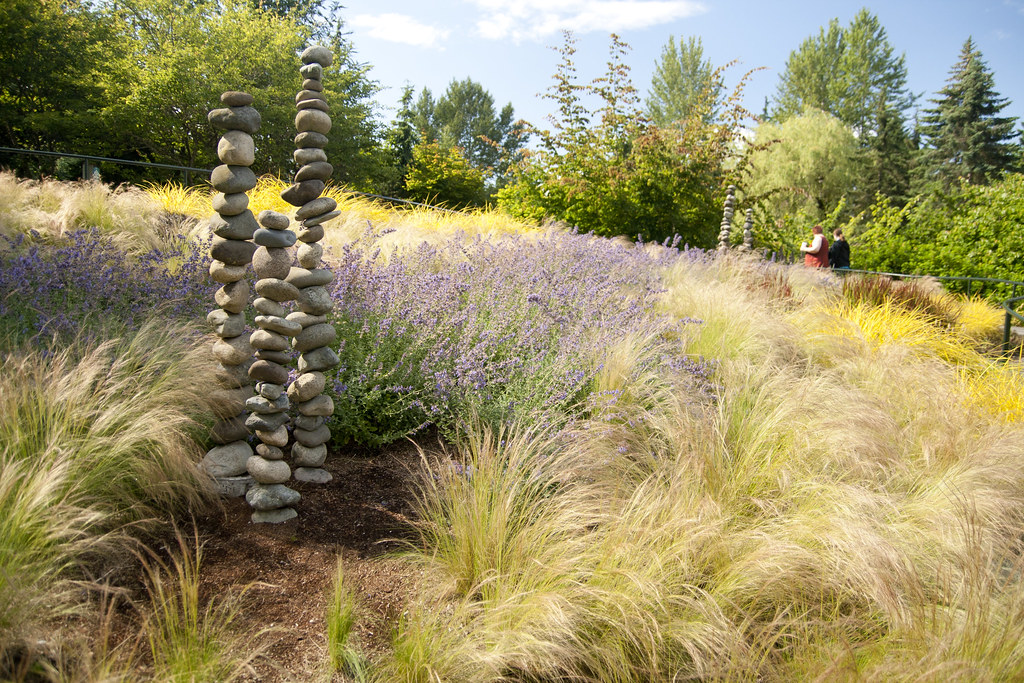
The first thing that greets you as you enter the garden is this great patch of grasses. Even though the bright sun made taking photos a nightmare for the most part...it did make for some awesome backlighting effects on these grasses.
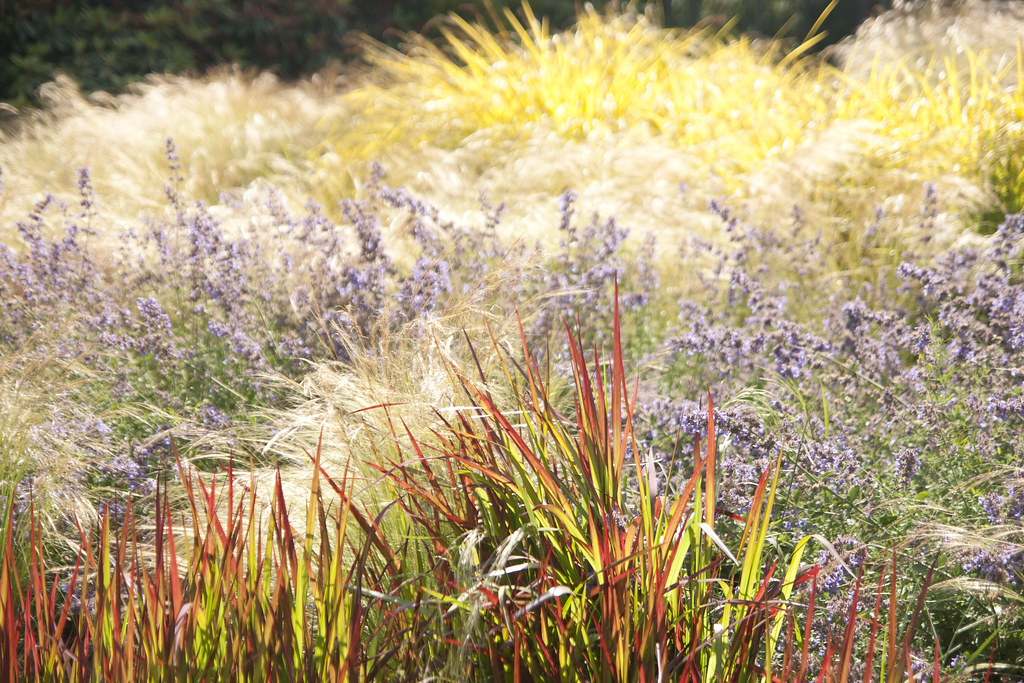
Another shot of the grasses, with the wonderful red-tinted Imperata in front, the soft purple cloud of Nepeta behind that, and all around the feathery plumes of stipa tenuissima.
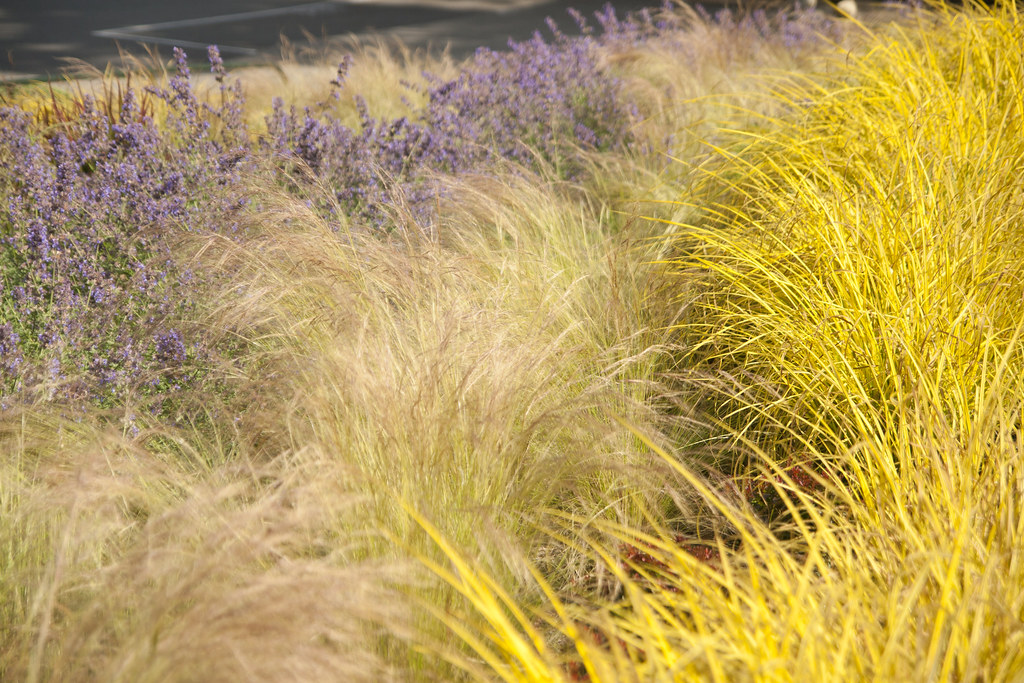
More grasses...sorry, I love them!
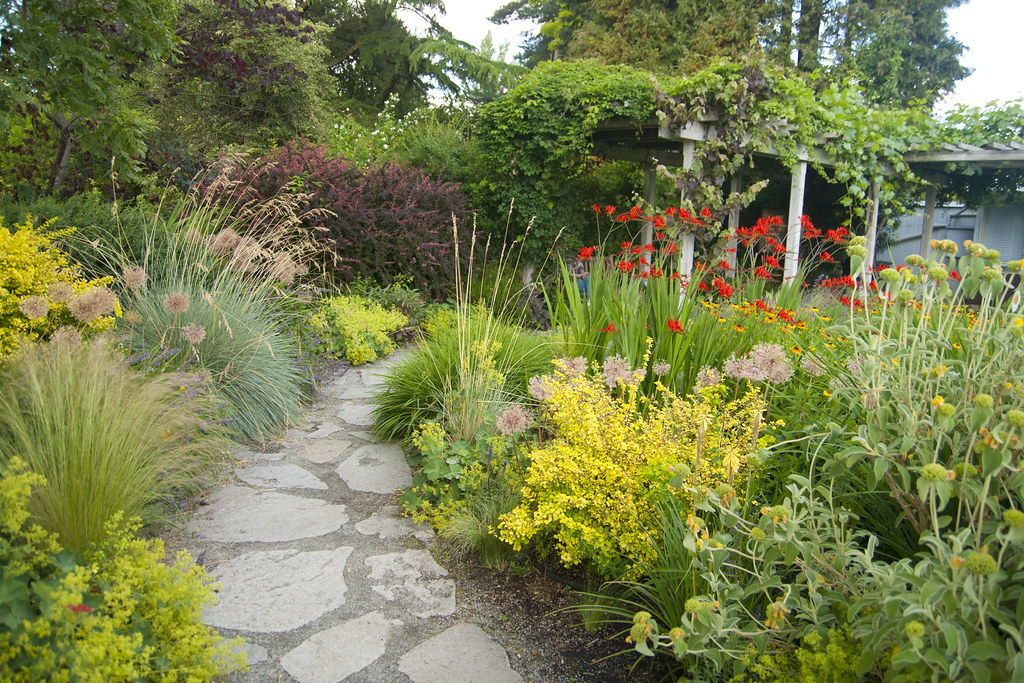
I found this circular path very pleasing...love the mixes of grasses and perennials. The Oat Grass is especially lovely right now. I love the pairing of the blue grass with the wonderful chartreuse blooms of the Alchemilla...which makes me question why I don't have any.
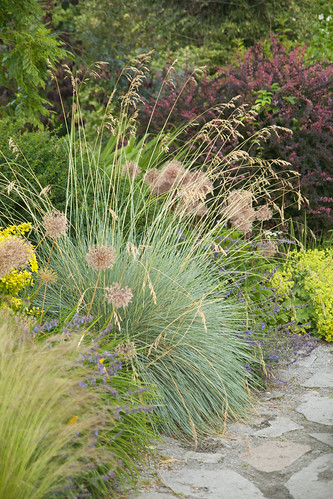 | |  |
| Blue Oat Grass | | Crocosmia 'Lucifer' |
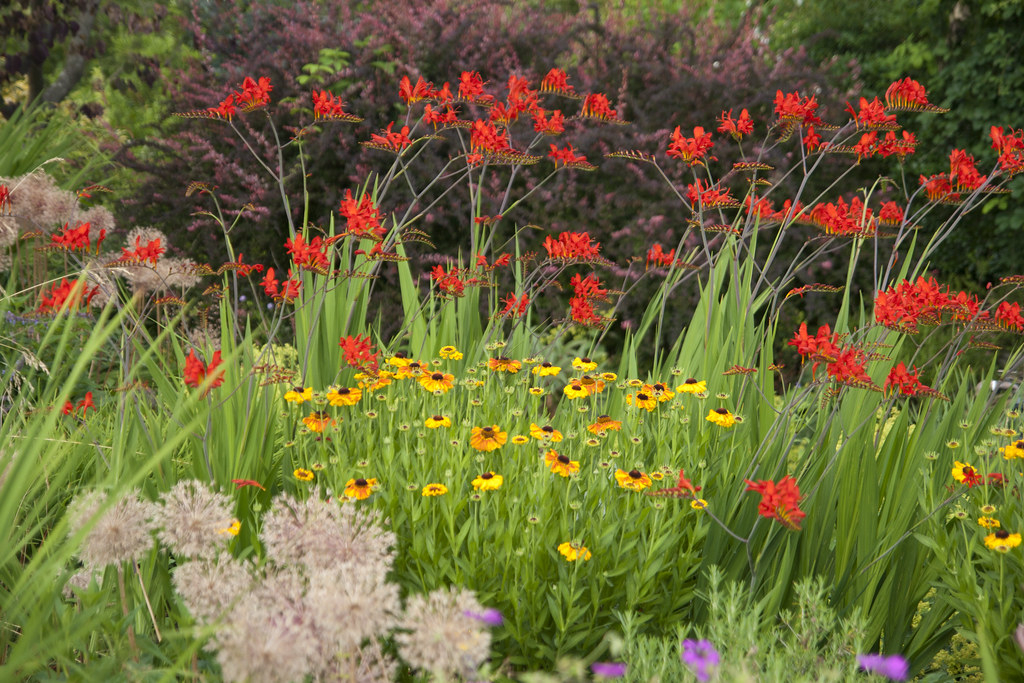
This is a picture of the same border from another angle. I love the warm colors and how they play off each other. I'm generally not a fan of red Crocosmia...it tends to be a bit too strident for my liking...but with the dark foliage of the barberry behind it, I find it quite fetching.

I loved this pairing of the somber, bruise-colored Astrantia and the brighter yellow of the Spirea ('Ogon', perhaps?).
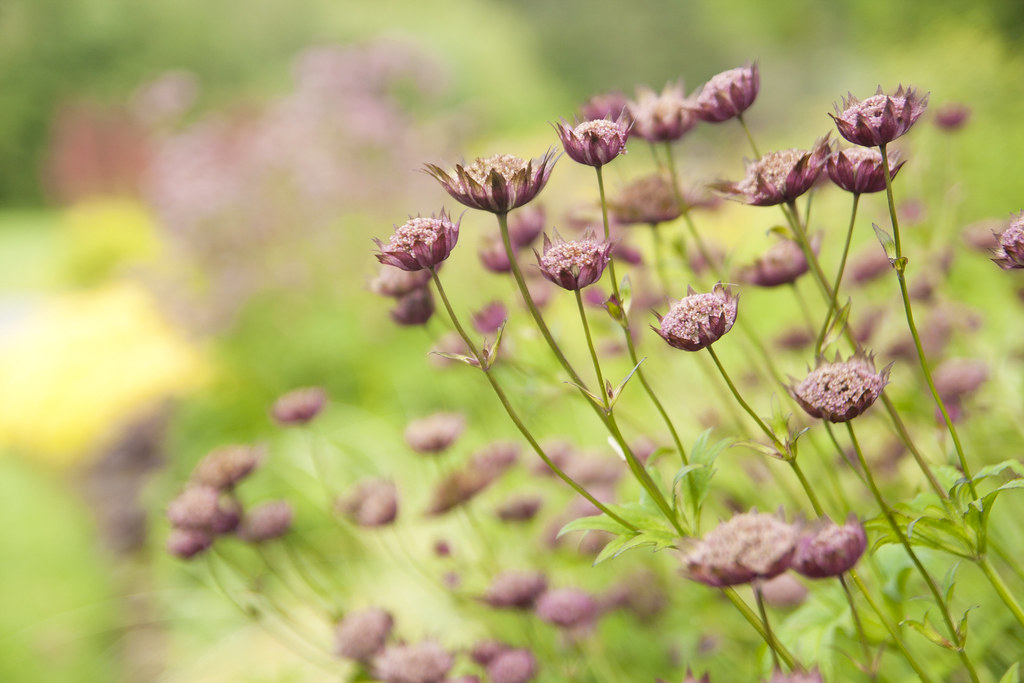
even though most of the Astrantia are done blooming, the bracts remain and continue to look good...just in a subtler, more earthy palette.
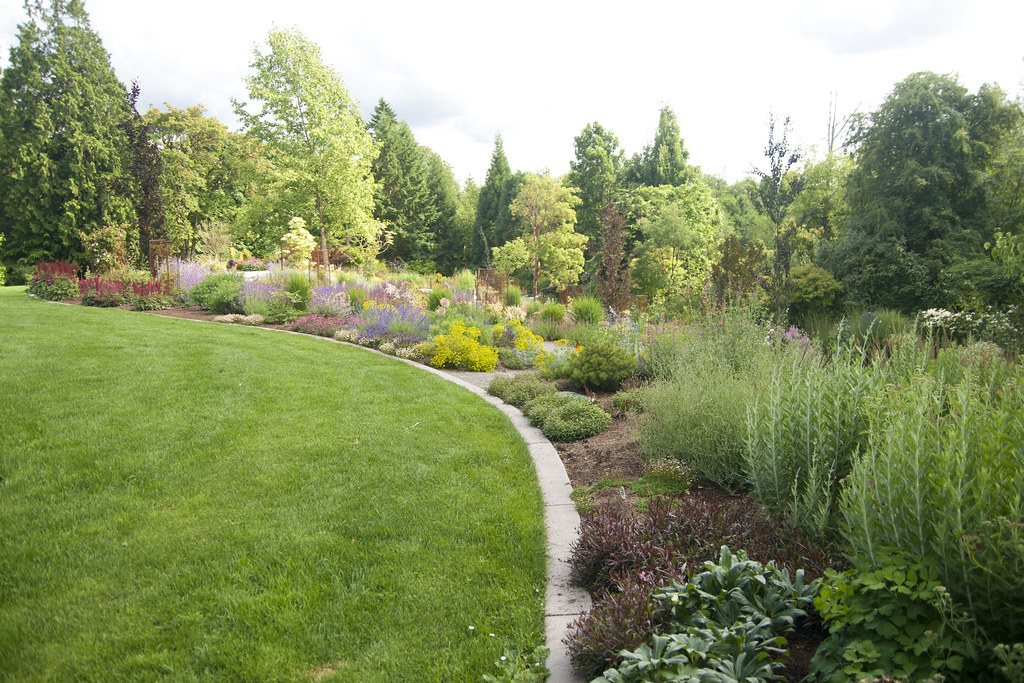
This is the top of the large perennial border...the border cascades down a gentle slope in several tiers.
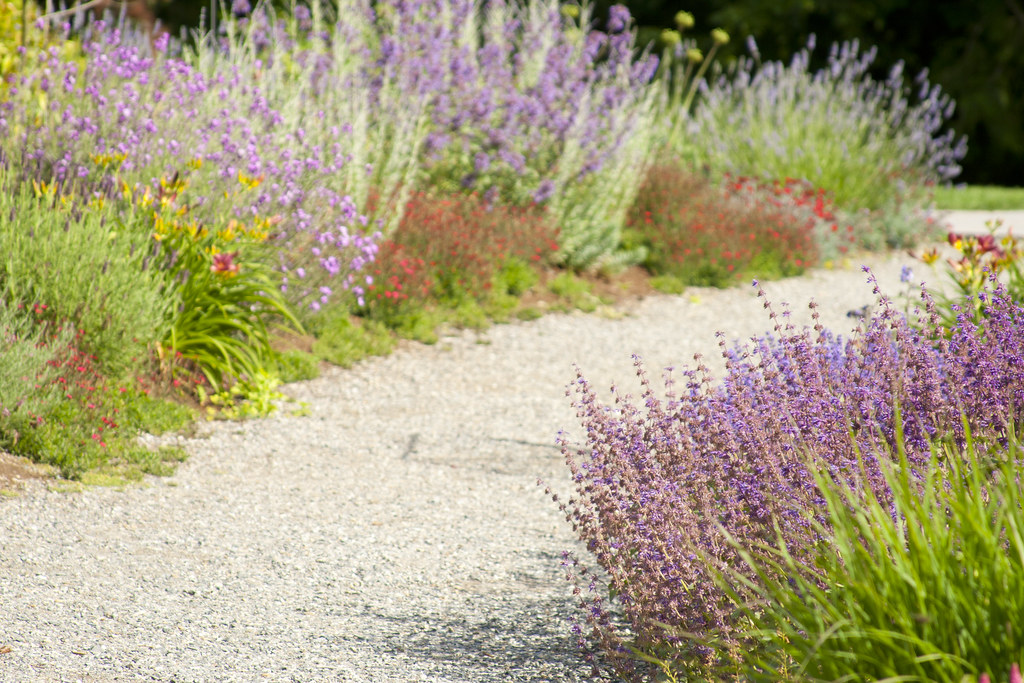
The paths in the Perennial border run parallel along the slope, dividing it into 3 or 4 tiers, I love so many of the plants they have planted here...it has a very English Border feel...with lots of complimentary tones of pink, purple and blue.
 | | 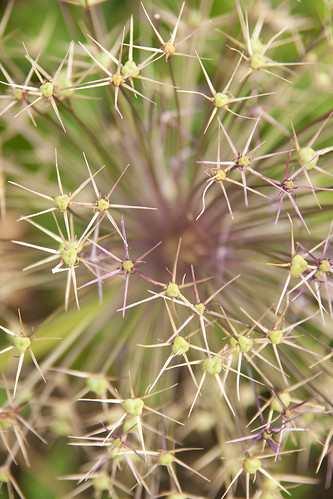 |
| Echinacea hybrid | | Allium seedhead |
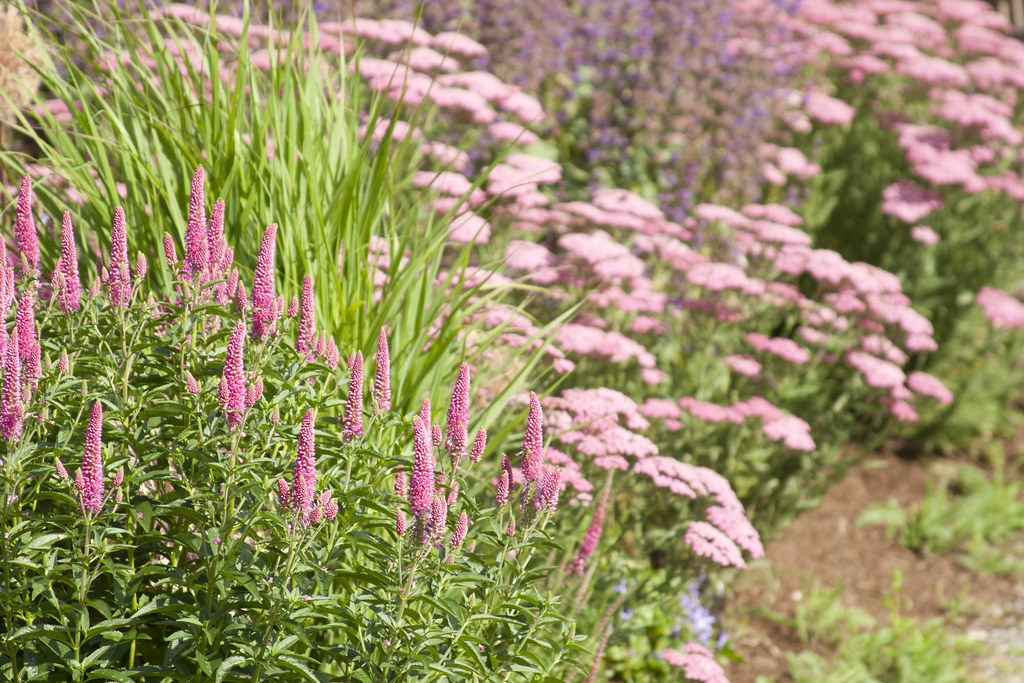
I love the soft colors of these borders...so calming, so restful...and the color echos are lovely
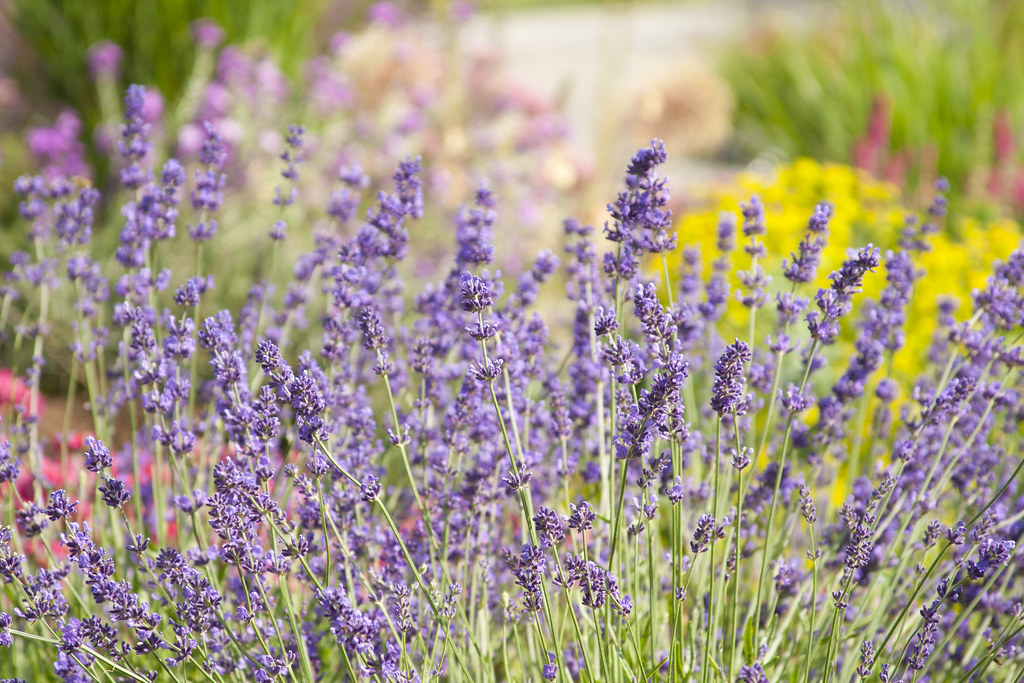
Seeing lavender in bloom always makes me want to run out and get some...then I'll see an old plant all woody and distorted...and my wallet pops right back in my pocket ;-)
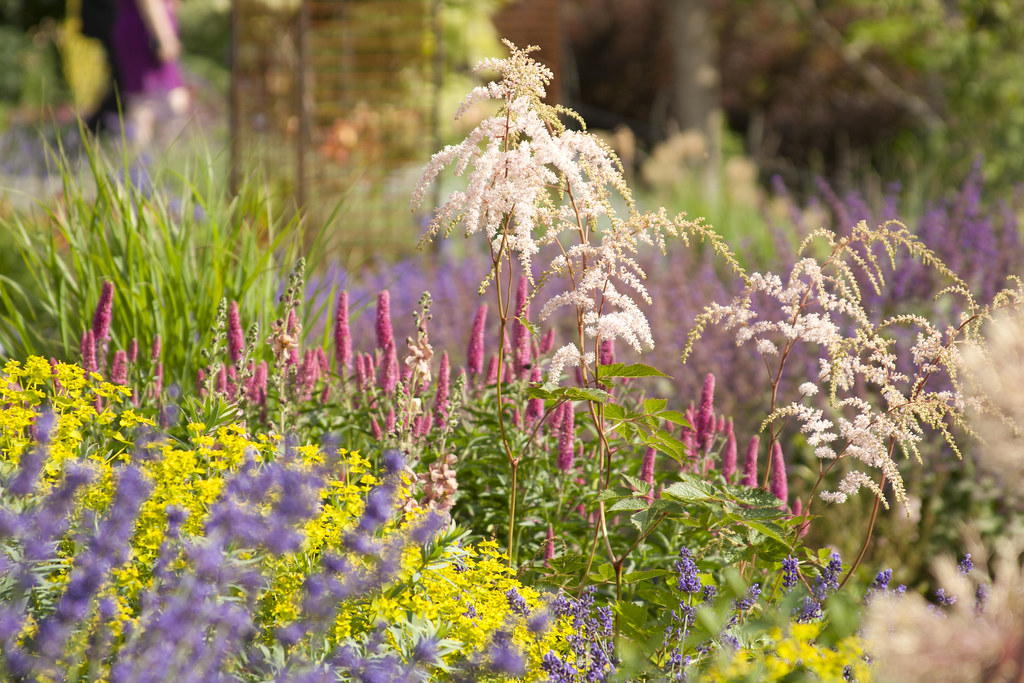
I loved how they incorporated Astilbe into the border, they create such a nice gauzy effect...like cotton candy.
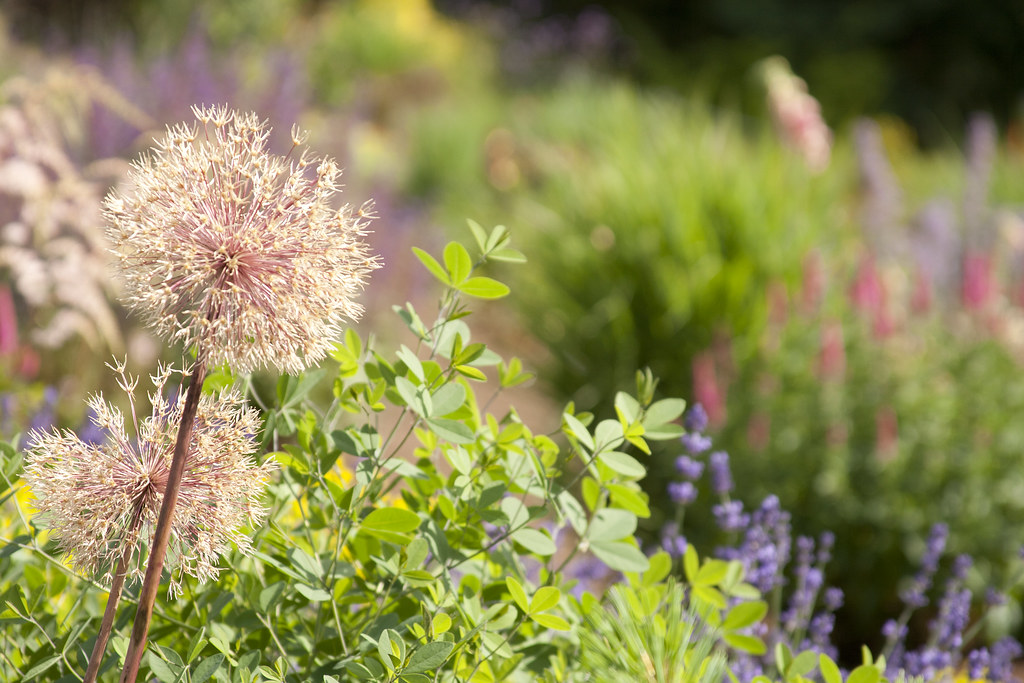
The spent blooms of Allium are almost as lovely as the blooms themselves...and I love the muted mauve color.
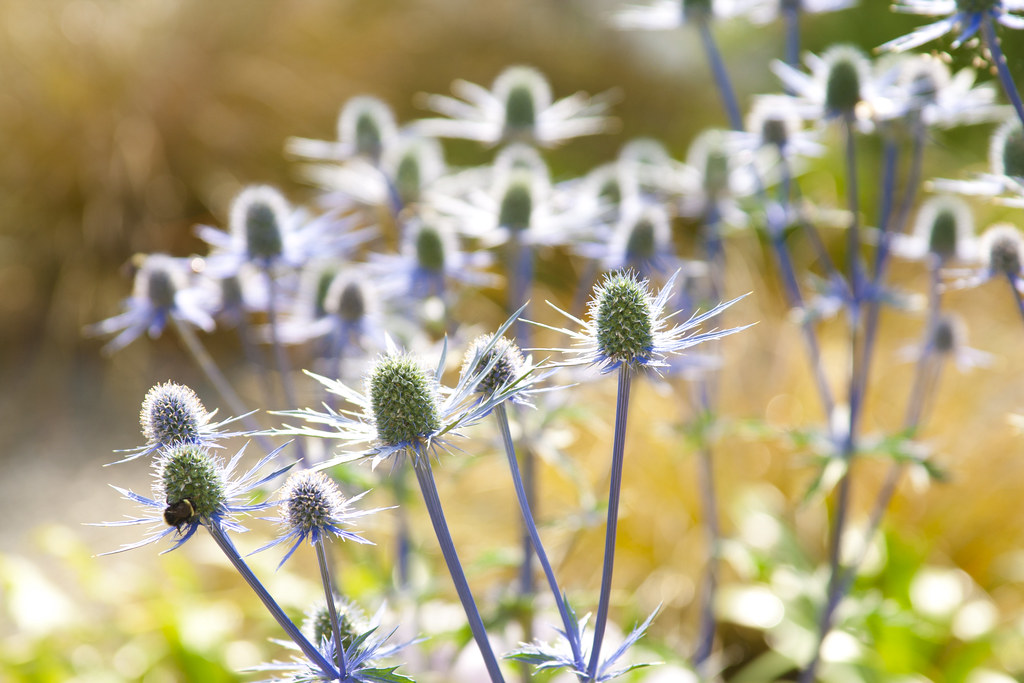
The color of these Eryngiums was electric...the bees and I were competing for the best view Sadly, the plants seemed a bit straggly...must find something to camouflage those knobby knees!
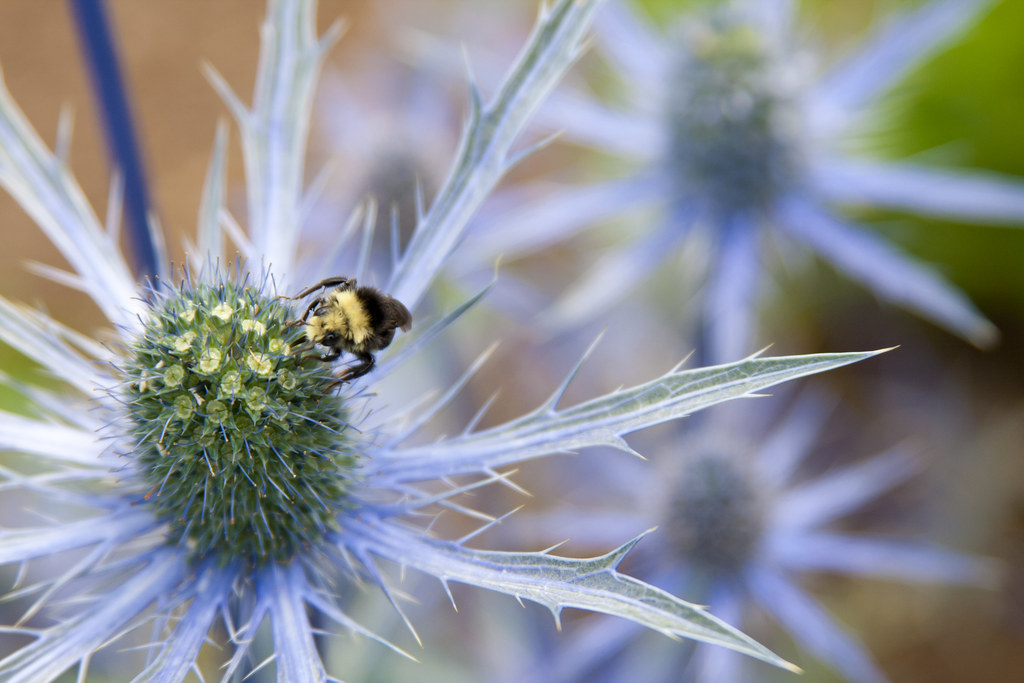
Another shot of those gorgeous Eryngium blossoms.
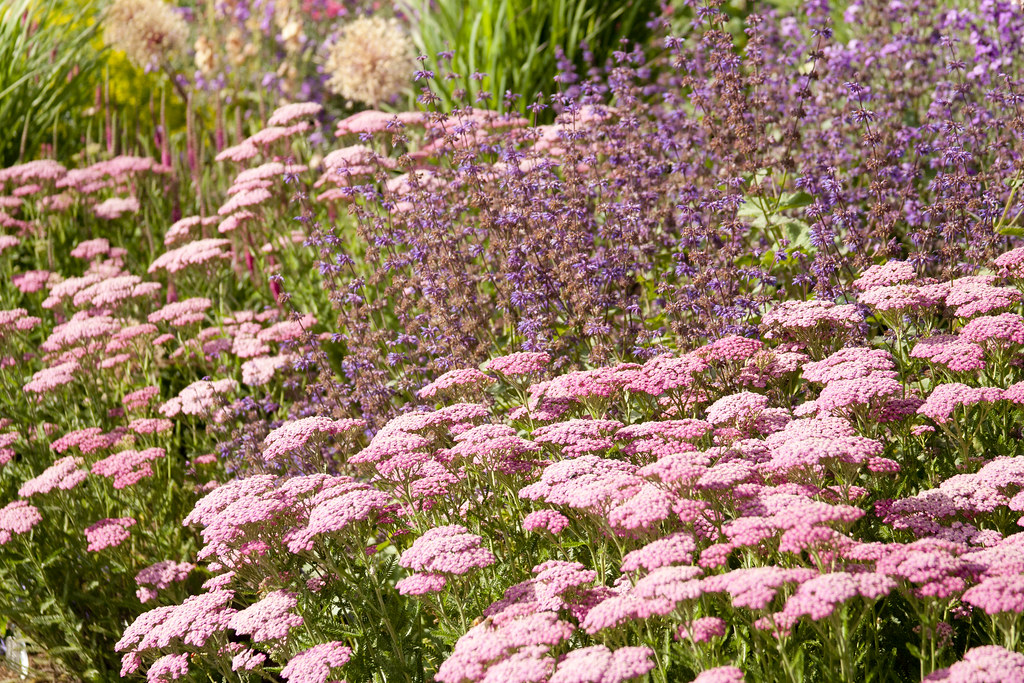
I really liked this combination of Salvia and Achillea...a nice study in complimentary color and form.
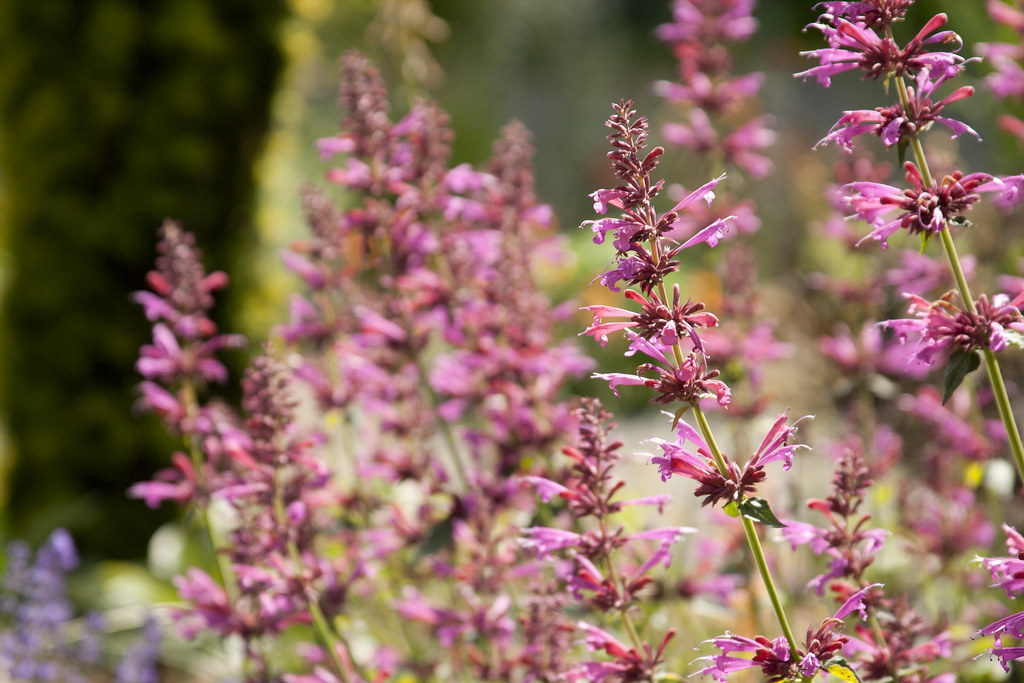
There were a few lovely Agastaches in the garden...love the multi-hued blooms on this one.
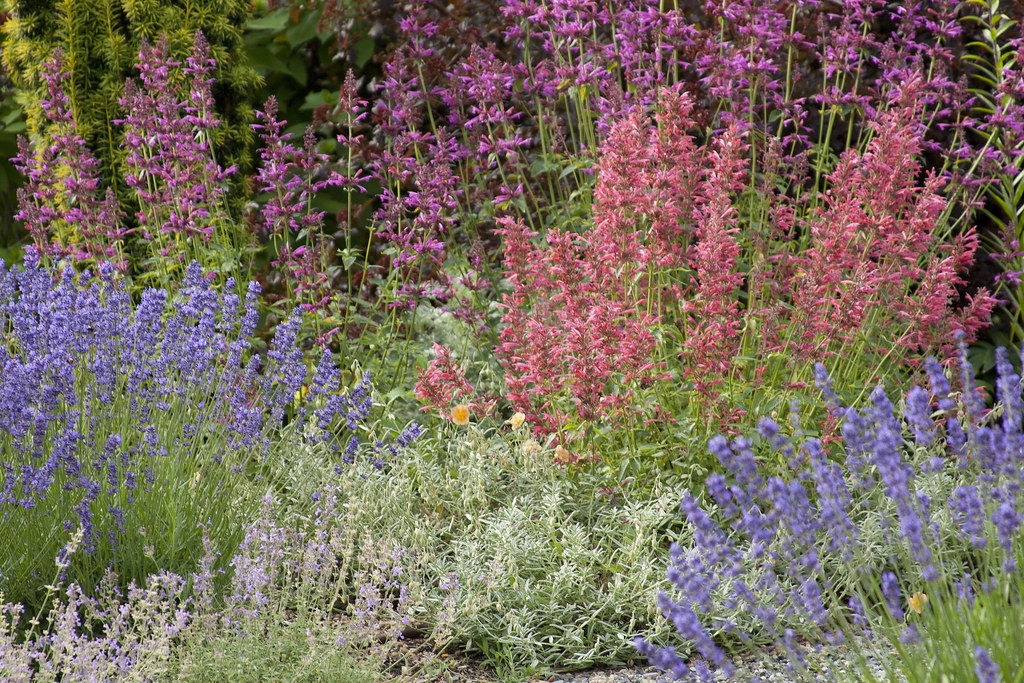
Now THIS is a color pairing I can love without reservations...Nepeta, Lavender and Agastache...colorful and drought-tolerant!

More Allium seedheads, I just love the structural quality of their blooms.
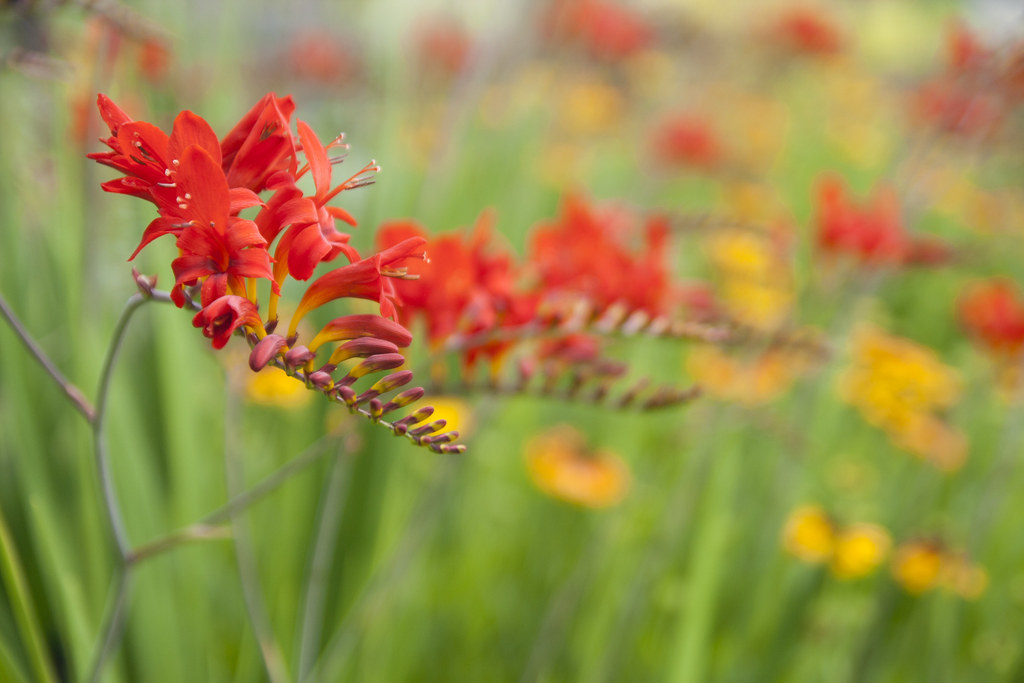
Another shot of the Crocosmia, accented by a wash of warm Helenium in the background.
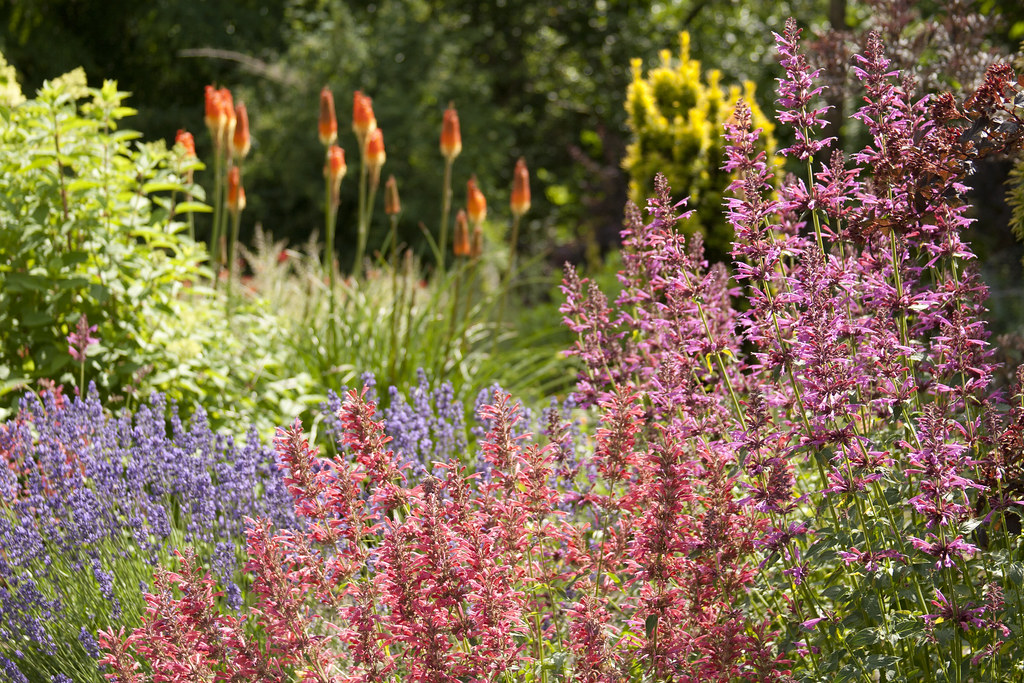
More of the Agastache/Lavender grouping, with Kniphofia in the background.
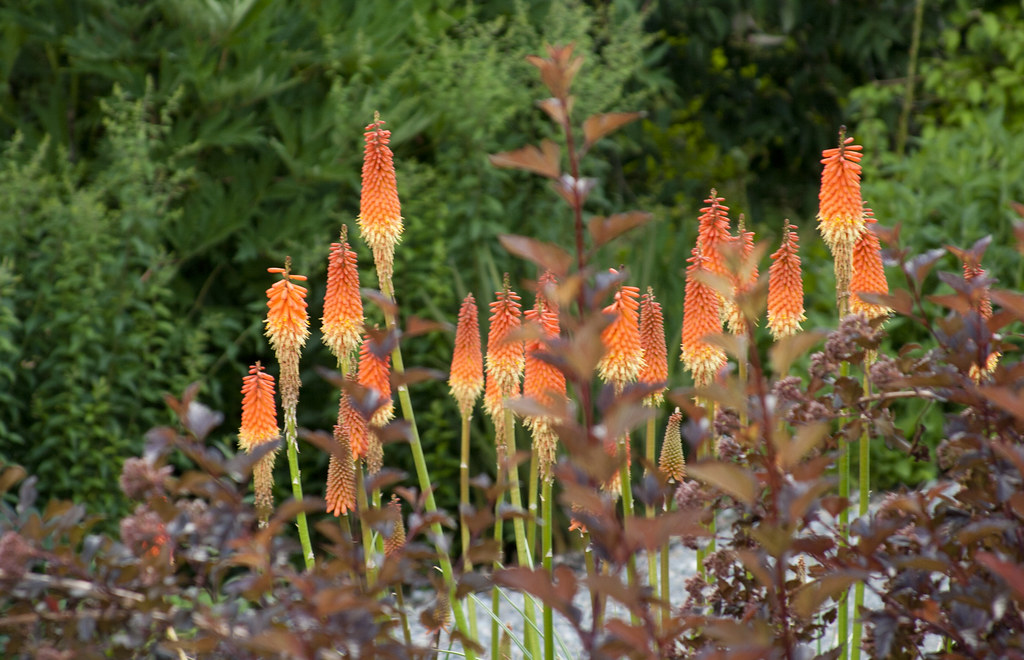
While I'm not a fan of Kniphofia, I did appreciate this pairing with Physocarpus.
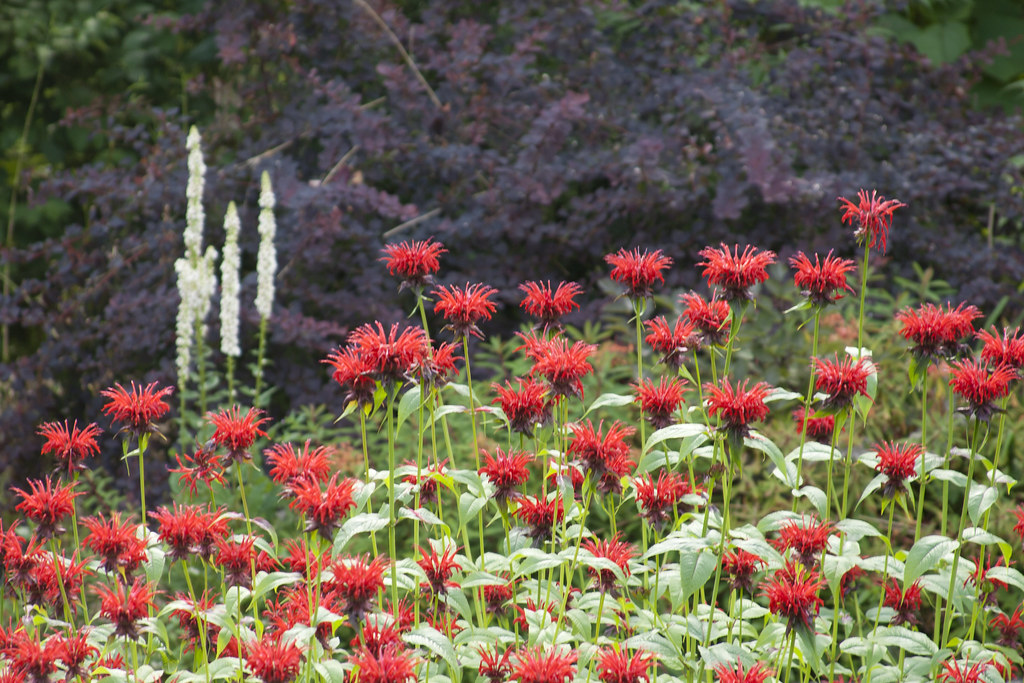
Again, not usually a fan of bright red...but I think this photo illustrates the trick to using it well...a dark background...it really seems to alleviate the overbearing redness of these Monarda. At the same time, the red seems deeper and richer against the dark background. The difference between the red on green and red on purple/burgundy is striking. One is like a laser beam to the brain...the other like a glowing ember.

While the bright yellow Achilleas you see most often can be a bit bright, I was really digging these Achilleas...they had just a hint of orange...which really softens them and makes them feel earthy.

I totally love this grass (Stipa gigantea)...mine is WAY smaller than this...definitely has a way to go before it's very "gigantea"! Here's to hoping it is just putting down lots of roots and will look this amazing next year! Love the fountain-like stems of flowers...so arresting when backlit.
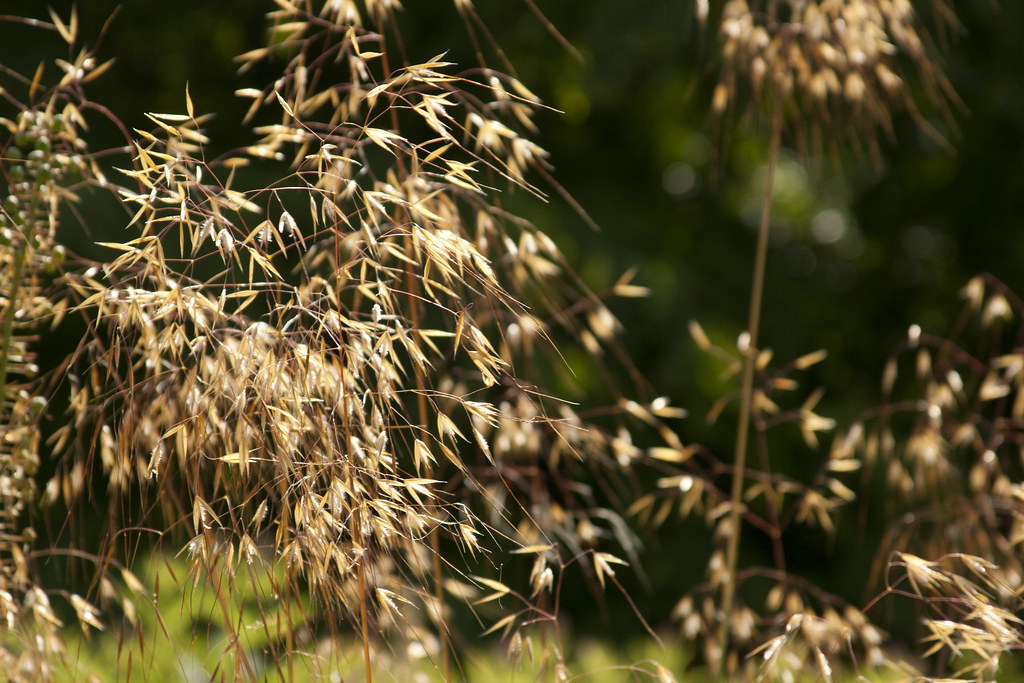
Closeup of the Stipa blossoms.
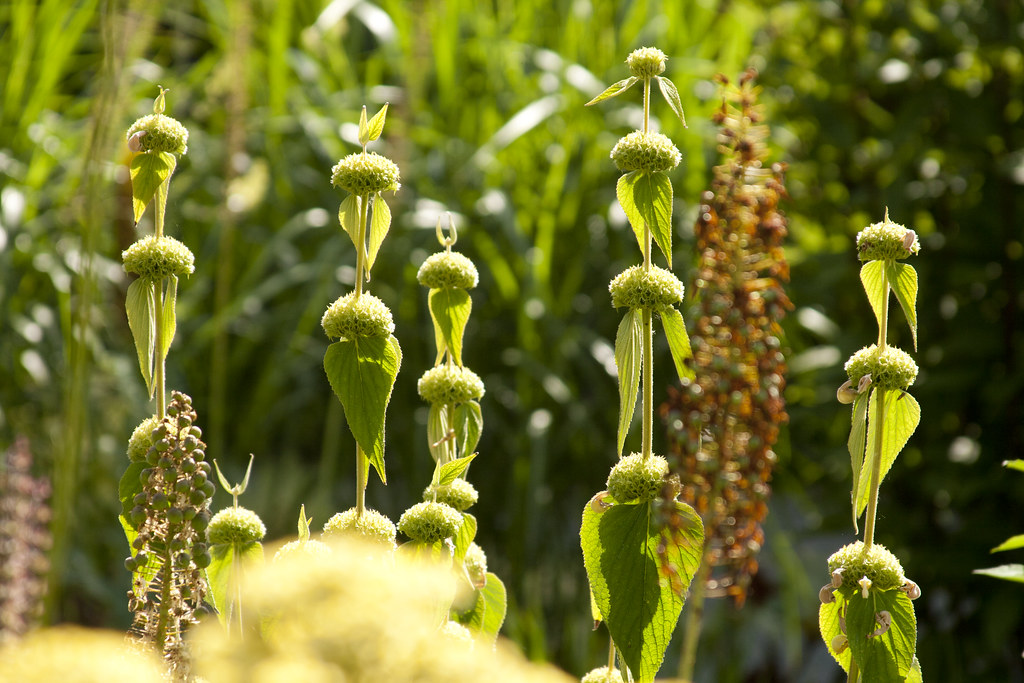
Phlomis russeliana is another plant that I almost think looks better post-blooming...when the form of the seedheads is really noticeable.
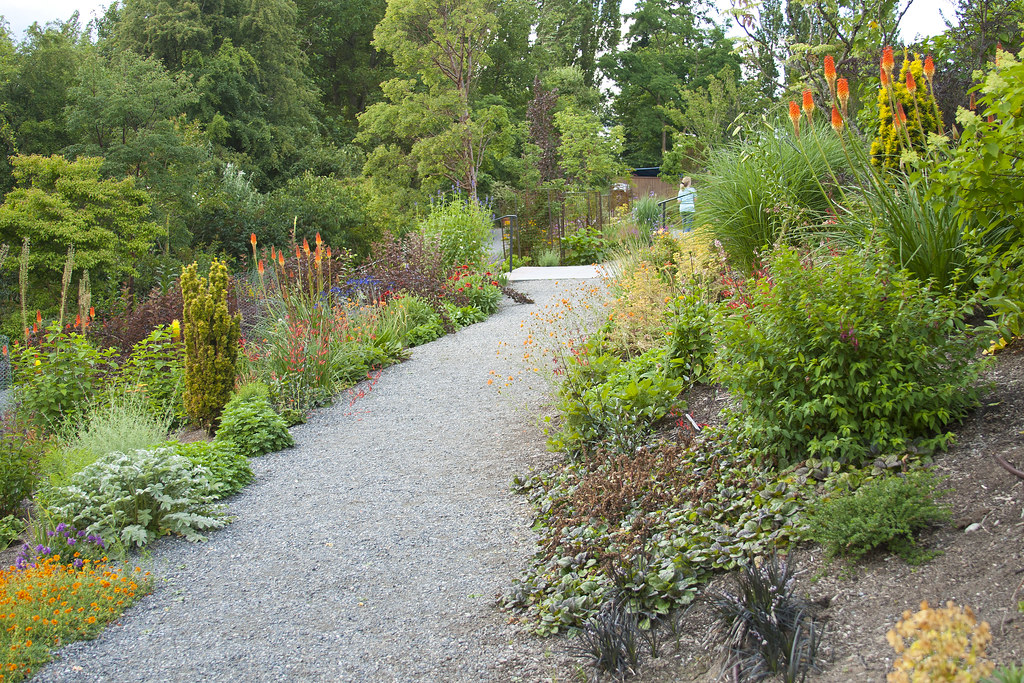
Another path cutting through the hillside.
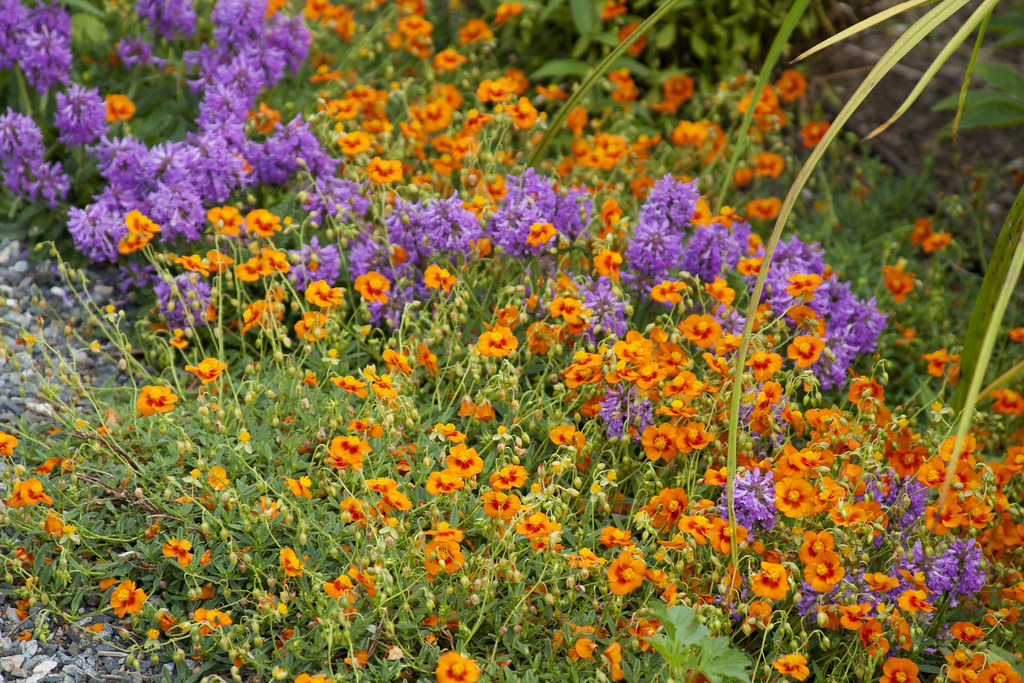
I love this combo of purple/orange...I could be wrong, but I believe these are Stachys and Helianthemum.

A wider view of that section of the garden.
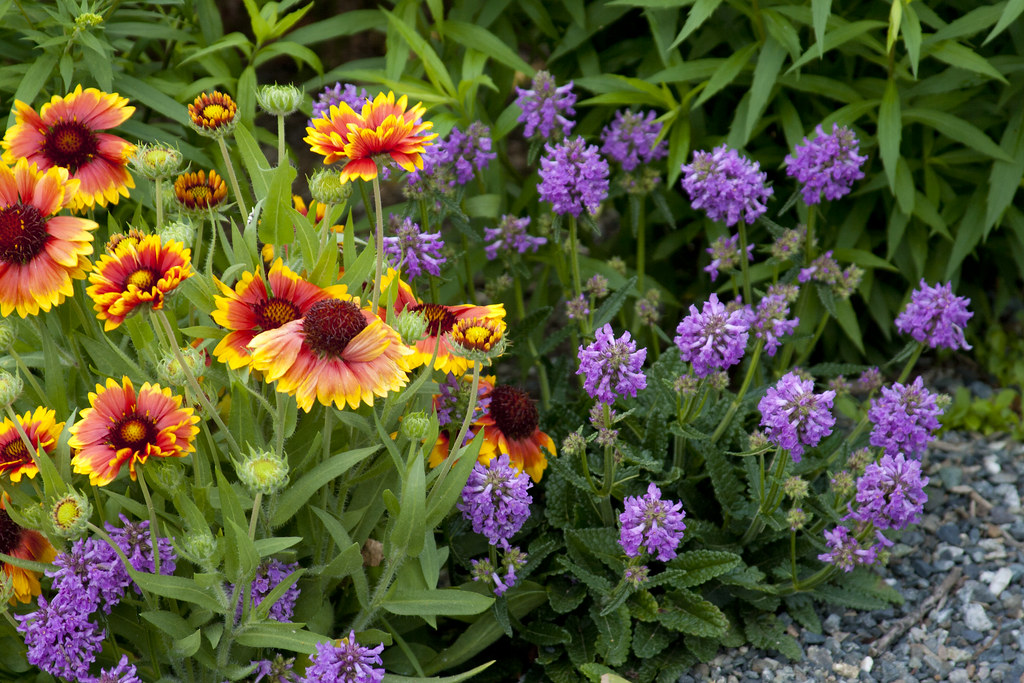
Another nice contrasting purple pairing...again the Stachys, but paired with Gaillardia this time.
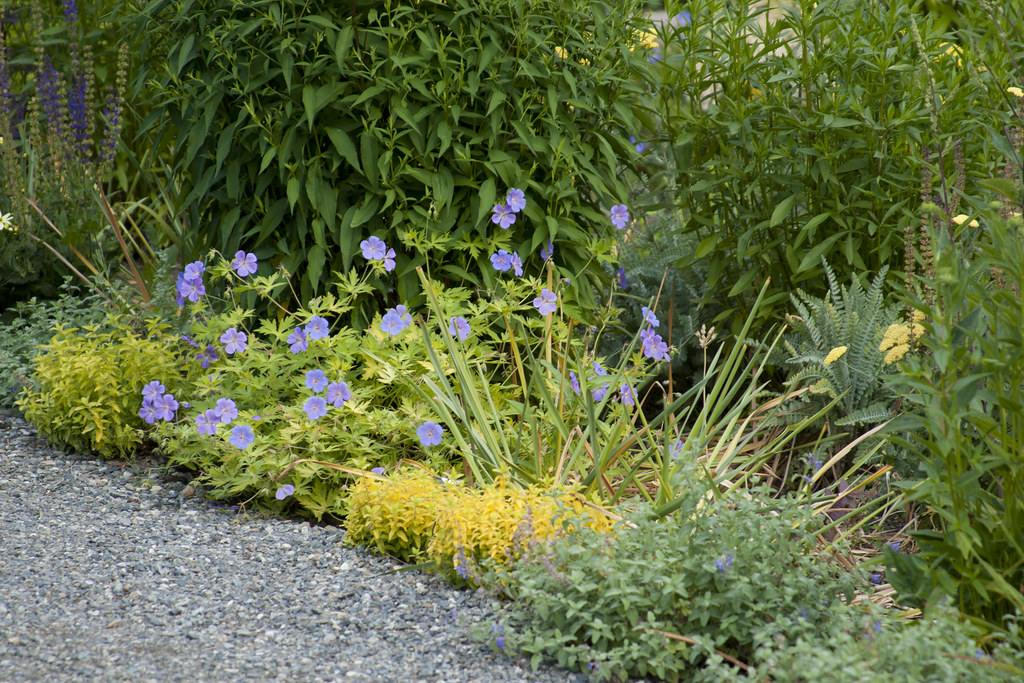
I was surprised to see Geranium 'Blue Sunrise' in the garden...mine is still pretty scrawny...someday it'll look this good.
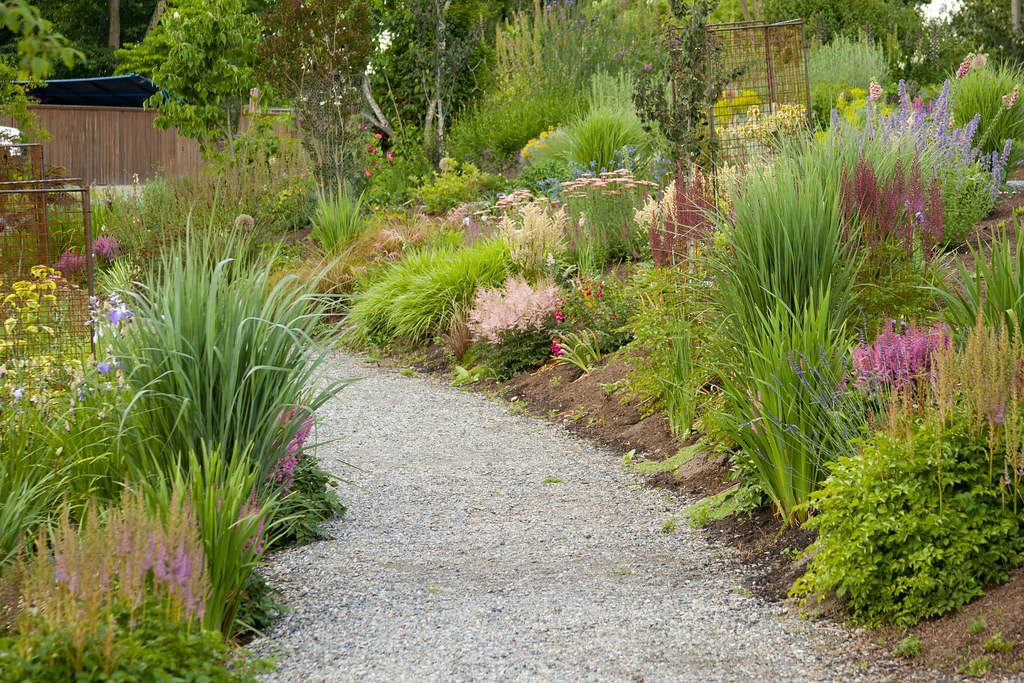
Another path lined with some grasses (looks like Panicum). One thing I would have liked to see more of was grasses, there weren't very many in this part of the garden.

My favorite new short groundcover, New Zealand Burr (Acaena inermis 'Purpurea') with Gaillardia coming up through it. Love, love, love the color of this groundcover.
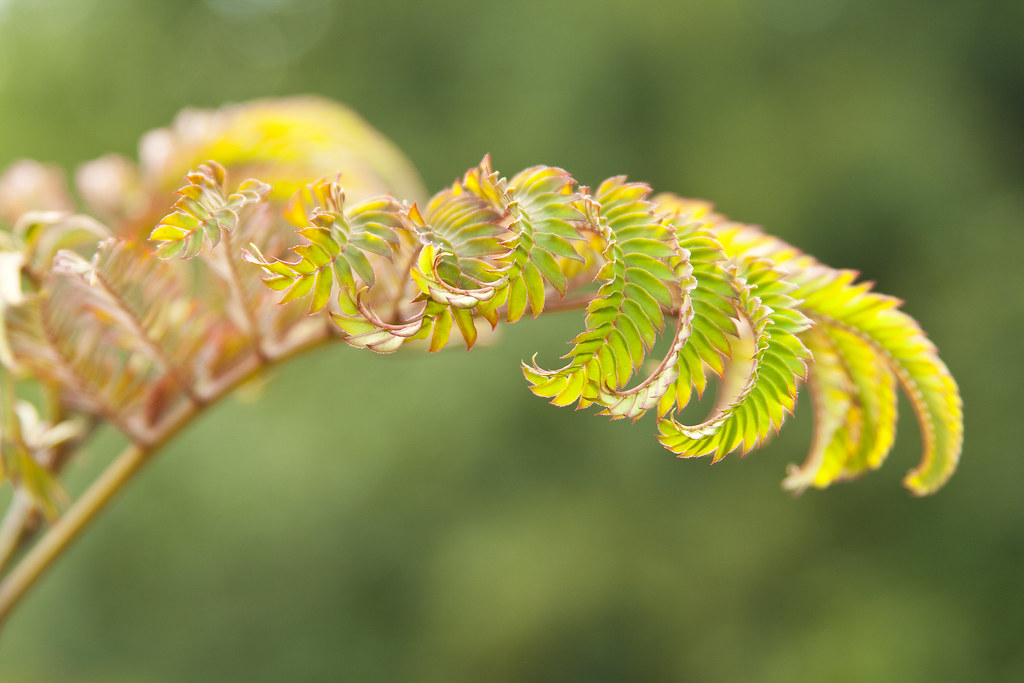
I believe this is a Mimosa...love the delicate structure of the unfurling leaves.
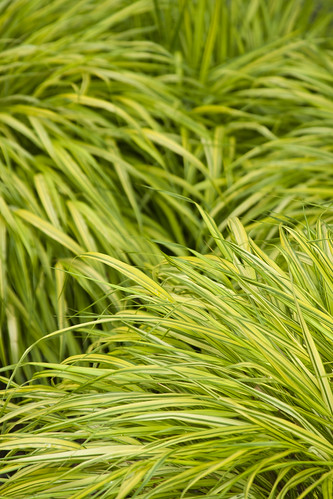 | | 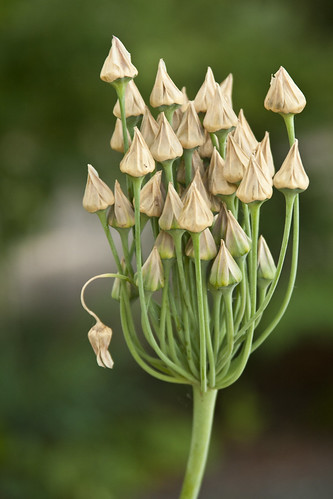 |
| Hakonechloa | | Allium |

I really do love the blooms of this Eryngium...there's just something about it...or maybe it's the story of Miss Wilmott that I like...either way, great plant!
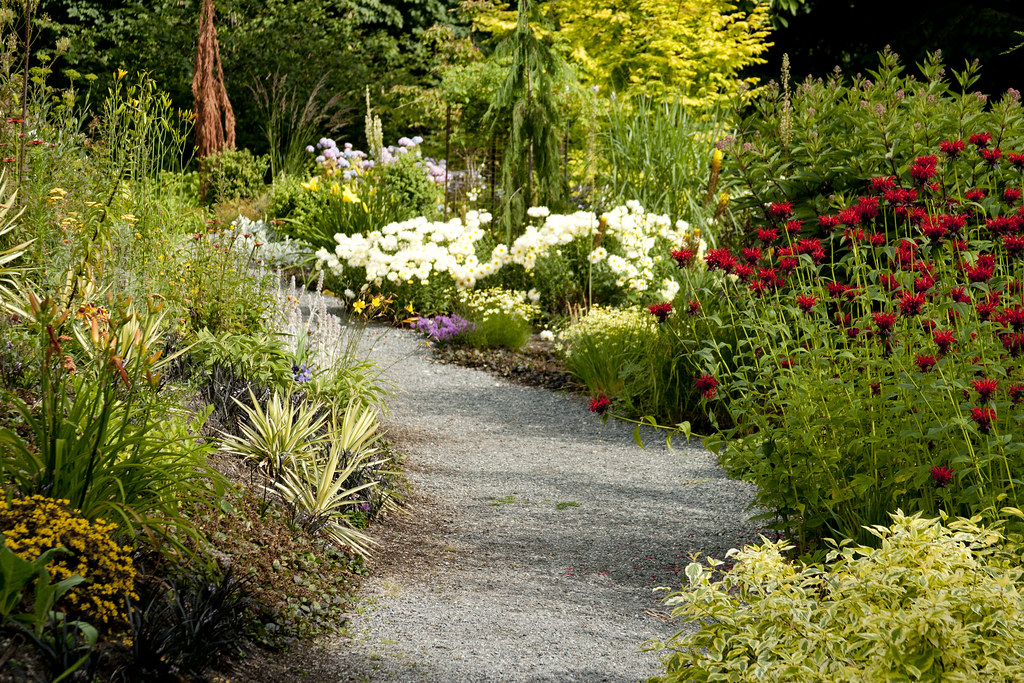
Another path winding past the Monardas and Yuccas before disappearing behind a cloud of Leucanthemum.
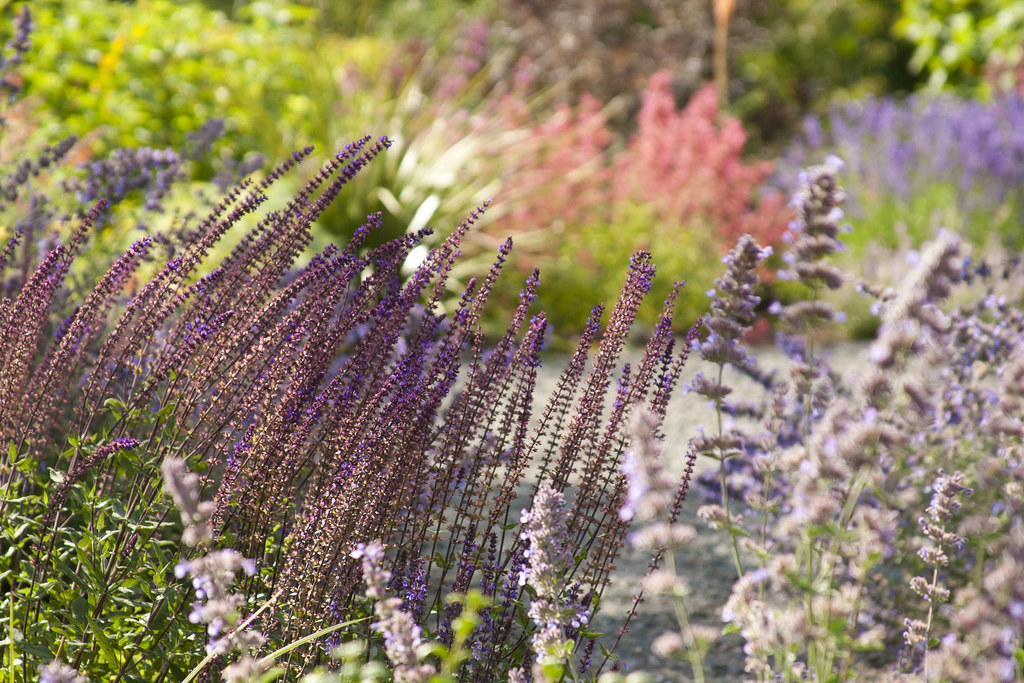
Even after the blooms of Salvia have faded, the spires add valuable color and structure to the garden.
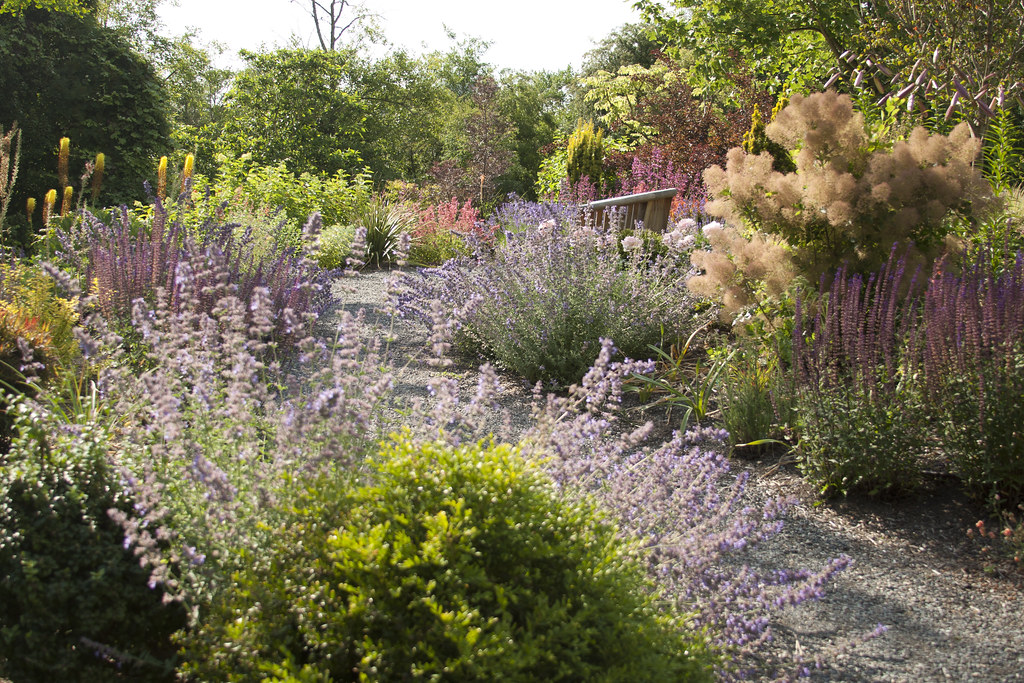
A frothy, dreamy, backlit view of the dry garden.
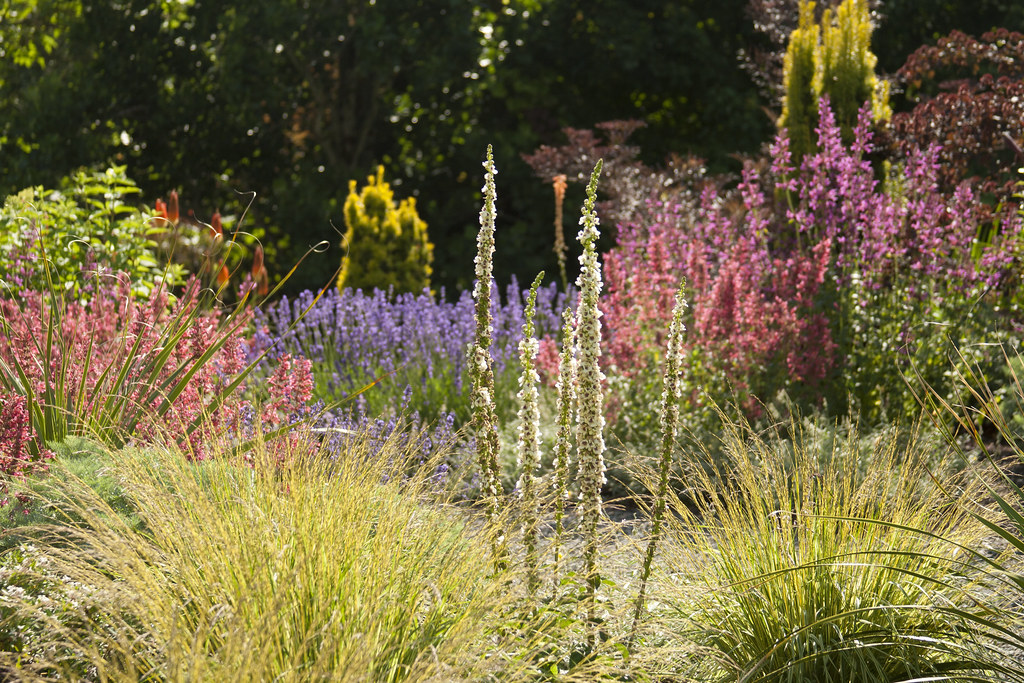
Again, backlighting for the win! Stems of Verbascum rise out of the Stipa, backed by colorful swathes of Agastache.
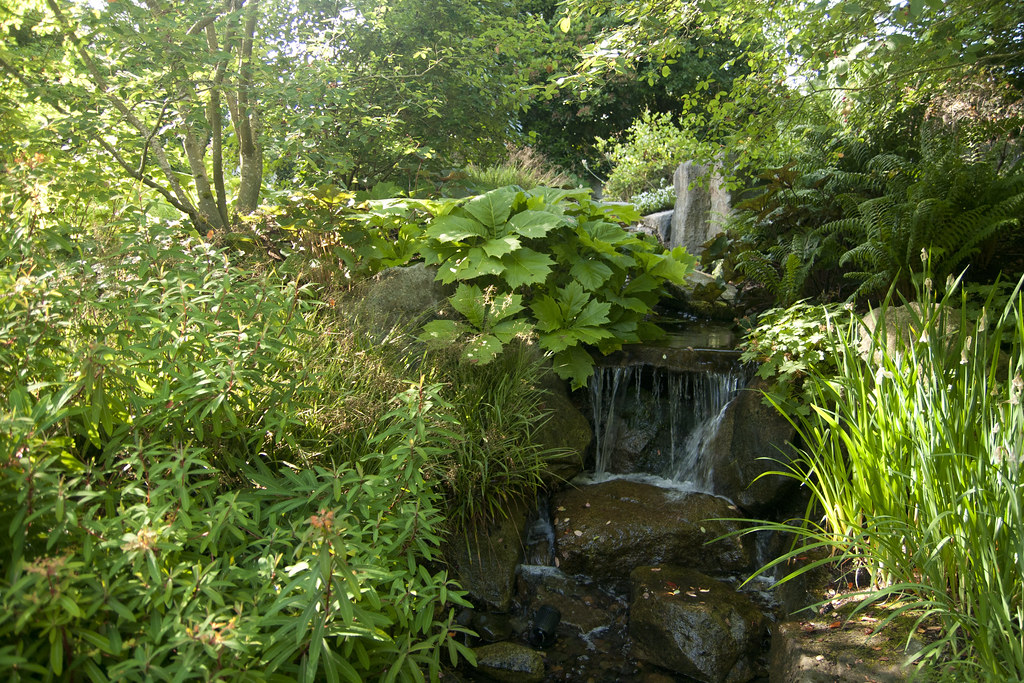
Oh...and there's a foresty/shady section of the garden too...but that probably deserves it's own post, as this one is already far too long!
Overall, I thought this Botanical Garden was pretty good...especially since I'd never heard of it before. There did seem to be large areas in a few borders, however, that were empty...perhaps they were in the midst of some re-planting? They also seemed to be using a really limited selection of plants (especially in the perennial garden). One thing that struck me on their sun-baked slopes was the paucity of Echinacea and/or Rudbeckia (except for the few hybrid Echinacea I showed above...hardly a good representation of the genus).
Also, as I mentioned previously, with that much sunny space, I would have loved to have seen more Ornamental Grasses. They had several beds that illustrated wise water usage...for which plantings of American prairie grasses would have been idea (never mind that they would also look spectacular!) Can you imagine a huge planting of Andropogon, Schizachyrium, Panicum and Sorghastrum...interplanted with their native partners...Echinacea, Rudbeckia, Vernonia, Eupatorium and Liatris (to name but a few). Then again, I'm sure I missed some parts of the garden...and like most public gardens, I'm sure they are constantly changing.
Still...and this is something I've always been puzzled by, why doesn't Portland have a botanical garden?
